Read our March 2019 College Expert Newsletter.
Here are the topics in this month’s newsletter.
- The Meaning of Fit
- Focus on Majors: Advertising
- Financial Matters: Free Money vs Loans
- Choosing Next Year’s Curriculum
Read our March 2019 College Expert Newsletter.
Here are the topics in this month’s newsletter.
By Kris Olson
My visit to Tulane, a private university in New Orleans, Louisiana, was amazing in so many ways. As a first-time visitor, I had no idea what to expect. All I had ever heard about New Orleans was the craziness of Bourbon Street and Mardi Gras and, of course, the devastating effects of hurricane Katrina. But the experience I had at Tulane, and in the city of New Orleans, gave me a picture vastly different from what I had imagined. Not that I had a negative picture, I just didn’t know how the university fit into the surroundings of the city of New Orleans, or NOLA as students often refer to it. What I discovered was that Tulane considers itself part of the fabric of New Orleans; the city is a cultural center, with amazing opportunities for learning, serving the community, music, dance and, of course, incredible food! Students are urged to, “embrace the place, and become part of the city.”

It’s hard to talk about Tulane without talking about the city of New Orleans. “The city is a cultural center, a brain magnet, attracting yuppies from all over,” according to Associate Director of Admissions, Lindsey Hoyt. Tulane is a part of the community; and the community is a part the college. Commitment to public service is a requirement of the Core Curriculum at Tulane, enabling students to become involved in any number of different organizations and projects in and around the city. Those service opportunities can often directly relate to the student’s academic major.
Location-wise, as it relates to the much talked about French Quarter, Tulane is about a 45-minute ride on the scenic and historic St. Charles Street Car.; Hopping off the Street Car at the Tulane stop, I instantly noticed, right across the street, the St. Charles Avenue entrance to the beautiful Audubon Park, where students were running around the Audubon Lagoon, picnicking and studying in the grass. Families, too, were enjoying the park, photographing the waterfowl and playing Frisbee. Crossing St. Charles Avenue, I headed to the Tulane University entrance and Gibson Hall, which houses the Office of Undergraduate Admissions.
Tulane is considered a selective university; meaning that the average GPA of students admitted is 3.6, and the range of ACT scores is 30-33. Admittance to Tulane is highly competitive; students should have a strong high school record including honors, AP or IB courses, but successful applicants are also actively involved in their schools and communities.
Tulane is a small-to-medium size school, with an undergraduate enrollment of 7,600 (2018); but don’t let the small size fool you. Tulane is an important research institution, offering a large variety of research opportunities and leadership options for curious, motivated students.
“At Tulane, it’s important to remember that ‘good fit’ doesn’t necessarily mean ‘comfort’ — You should stretch yourself, challenge yourself, and use your time here to grow academically and socially,“ said Hoyt during an extremely well-attended information session. Tulane allows you to do this through their flexible curriculum. When you apply as a freshman, you do not apply to a certain school, and have the flexibility to figure out what you like and what you are good at before choosing you major.
“One of the best things about Tulane,” said Linnea, a current freshman, “is having the ability to take classes from any one of the 5 colleges, making it easier to explore classes before choosing a major at the end of sophomore year. Another student (my tour guide) was an architecture major, but has also enjoyed taking classes in business and art. He also raved about the URBANbuild program, where architecture students have the opportunity to actually build a home. If you are interested in architecture, check it out on the Tulane.edu website!
Tulane’s flexible curriculum is a huge draw for students interested in gaining an interdisciplinary education. A full 30-percent of Tulane students double, or even triple, major. The smaller class size is also a big plus, averaging 23 students per class (in majors), or an 8:1 student to faculty ratio. Faculty is known for being highly accessible to students.
Some of the most popular majors at Tulane are: Business, Management, Marketing, Public Health, Biological and Biomedical Sciences, and Social Sciences and Related Support Services, Health Professions, Science and Engineering, and Architecture, among others.
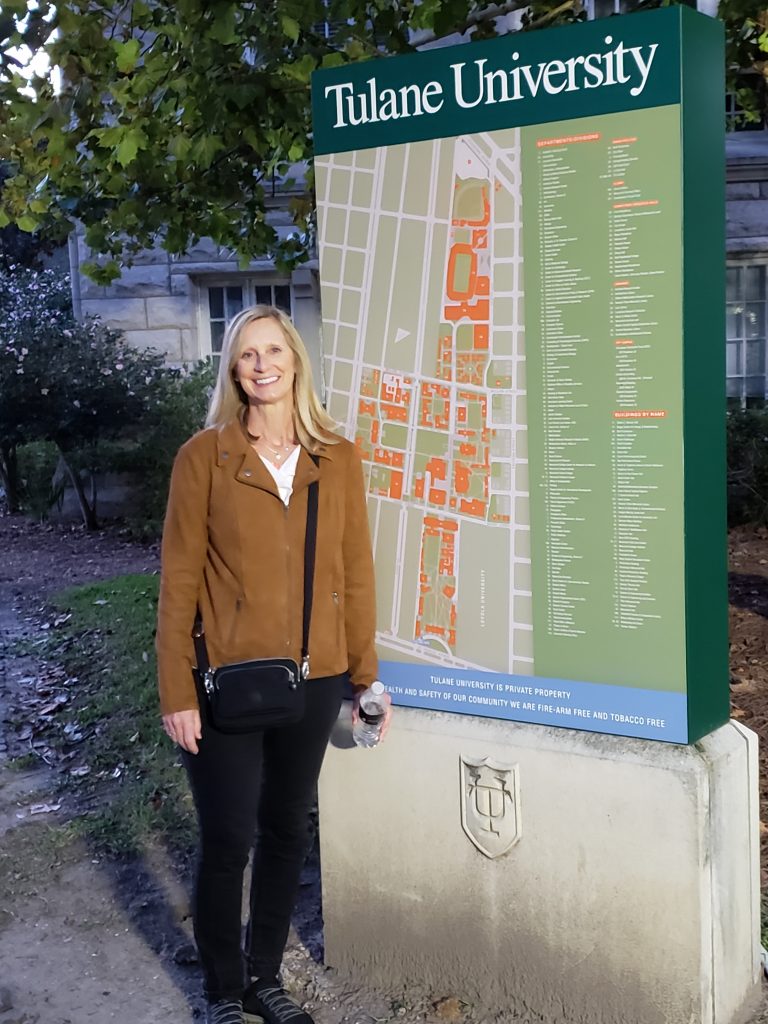
Students at Tulane have a positive affect on the community around them. On campus, there are 200+ clubs and organizations, and students love to be involved. One of the favorite, and most unique, programs on campus is called TUSTEP, a service-dog training program. Puppies on campus – what could be more fun!
Greek life is popular as well, and about 40% of students participate. Rush takes place 2nd semester in order to give freshman students time to adjust to college life, make friends and decide whether or not Greek life is for them. There are so many activities to choose from and become involved in, that being “Greek” is not a must-do for anyone.
Tulane’s D1 sports teams are very popular, and school spirit thrives on campus. The club teams are also competitive and travel for match-ups.
Tulane is a university offering amazing opportunities to learn, do research, and find your career path. For more information on everything from academic majors to cost of tuition, refer to the Tulane.edu website.
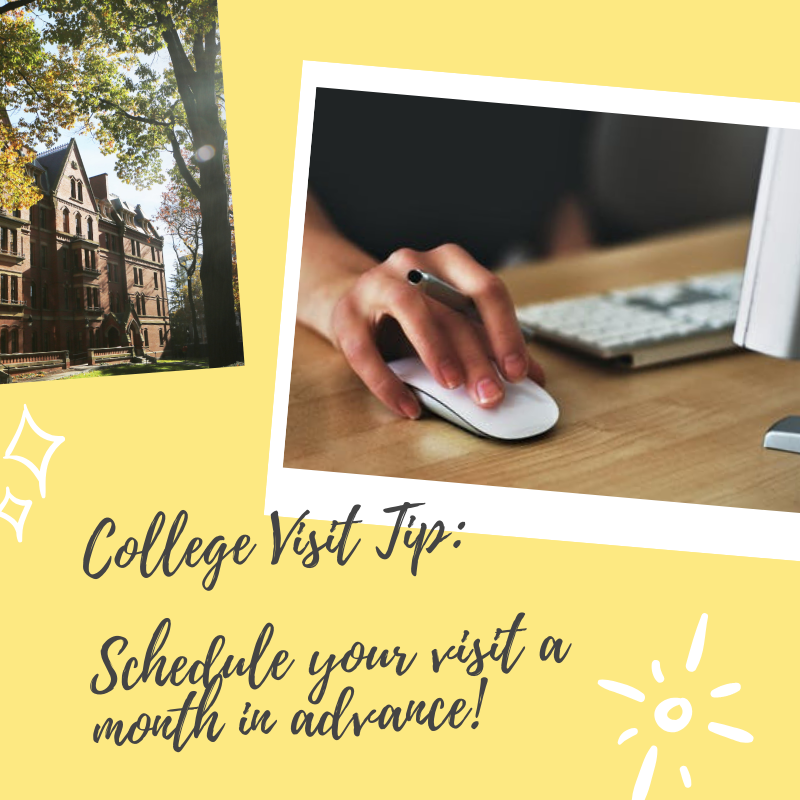
For those students not hitting the beach this spring break, college visits might be on the docket. But walking around campus and checking out the library and dining hall aren’t the only things you should do to make the most of your school stopover.
A school visit requires a little planning before you go. Evaluating a college isn’t just about the campus exterior, but whether it’s a good match for your academic path and personal preferences. These are things you should consider before pulling into the parking lot.
Here are some tips from College Expert for planning your college tours and making the most of your time on campus:
1. Choose a variety of colleges
Carefully choose a variety of colleges to visit and make sure you have some “reach” colleges, schools where you are likely to be accepted, and affordable colleges that fit your budget. Visit a large public university, a small private college, an urban campus, and a college in a small town to get a sense of what feels right to you.
2. Schedule your visit at least a month in advance
Most colleges offer morning and afternoon information sessions and tours year-round, Monday through Friday. They may have special visit days, and sometimes they offer visits on Saturday mornings. Sign up at least one month before you go, and be sure to spend at least a half day at each college. You can visit two colleges a day if you plan it right.
3. Learn about the college beforehand
Read material from the colleges you are visiting and check out their websites. Look for things that interest you that you may want to learn more about during your visit. Doing some research ahead of time may also prevent you from asking an embarrassing question, such whether they have an engineering program when it says they do on their website.
4. Explore the college community
When you are visiting an out-of-town college, stay at a hotel close to the college you plan to visit. Check out local restaurants, shops, and recreational options near campus. As a student, you will spend most of your time on campus, but the surrounding community may still play a part in the overall fit. Drive by the admissions office ahead of time so you know where it is and where parking is available. Make sure you have the GPS address for the information session/tour, not just the general campus address. It is usually, but not always, held at the admissions office.
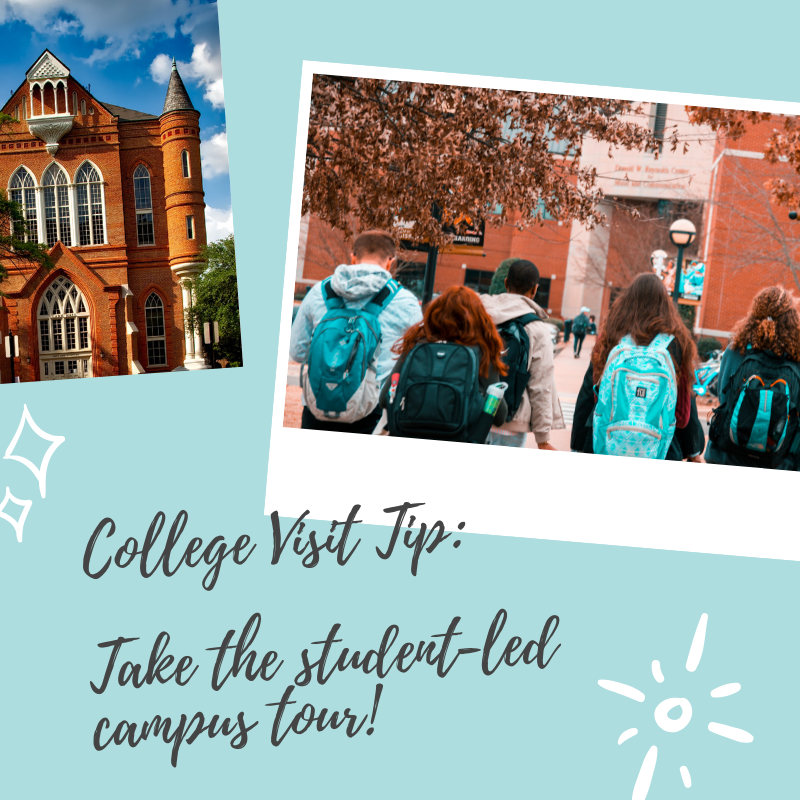
5. Participate in the information session
Information sessions are usually led by an admissions counselor who will give an overview of academics, campus life and admissions. Ask questions that help you clarify the academic programs that interest you and the type of student who is most comfortable and successful there. Pay close attention to the admission requirements and deadlines.
6. Take the student-led campus tour
Take advantage of the opportunity to learn about campus life on the student-led tour. A student can provide insight about the social scene, school spirit and the overall fit. Find out if students stick around on weekends. If you visit a dorm, picture yourself living there. Pay attention to the library and other study areas where you would spend a lot of time. Most importantly, can you relate to the students who go there?
7. Explore campus life beyond academics
If you are an athlete, checkout the athletic facilities. If you are a performing arts student, check out the theater and concert halls. Look for clues about what campus life is like. Every tour will take you to the student center where students eat and hang out. But investigate further. Read notices posted in the dorms or on bulletin boards. Pick up the student newspaper and read the articles. Can you see yourself there?
8. Eat lunch in the student center; watch student interactions
Observe the students. Are they sitting by themselves with their headphones on or are they laughing and talking with each other? Do you feel comfortable among them? What do you think of the dining options? Feel free to strike up a conversation with a student. Let them know you are touring and ask for their impression of the college.
9. Arrange for campus meetings in your areas of interest
Learn as much as you can while you are on campus. For example, the admissions office may be able to help you set up a meeting with a coach, or if you are a musician, with the music department. Occasionally they will also let you sit in on a class. If you know a classmate attending that college, try and find a time to meet and get their impressions as well.
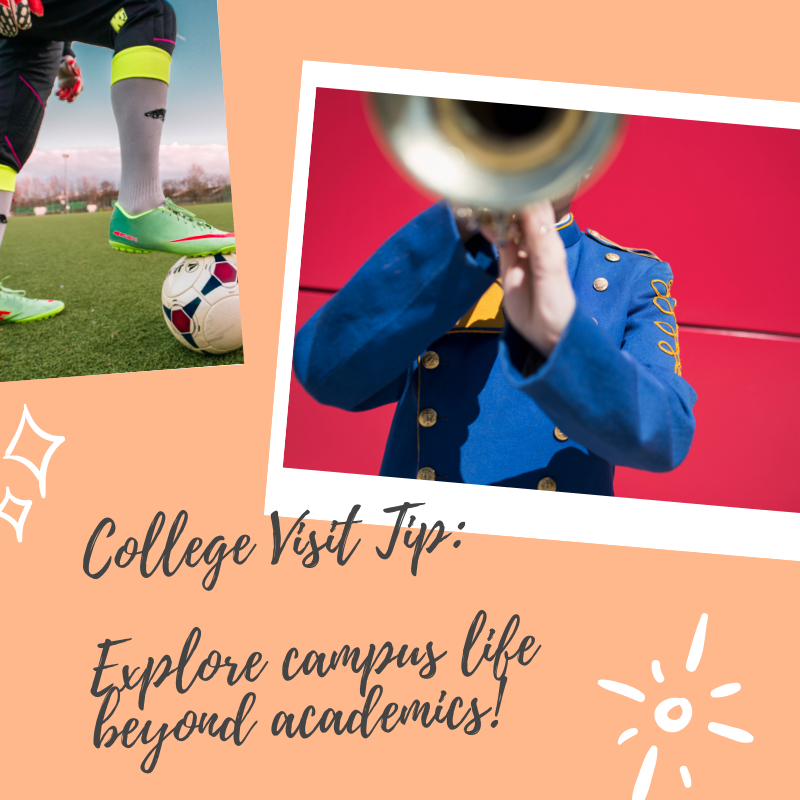
10. Write down your impressions; send a thank
If you don’t stop to record your thoughts, different schools may begin to blur together. Keep a list of pros and cons for comparison. (Consider taking photos to help you keep track of the campuses you visit.) Evaluate the campus environment and note your impressions. Is it too big or too small for you? How would you get around campus – particularly in the rain or snow? Is it easy to get home? If you apply to that college, you may need to write an essay about why you would like to attend. If necessary, you can revisit your notes for details you may have forgotten.
After you’ve completed your spring break visits, don’t forget to send a thank-you email to your assigned admissions counselor letting him or her know you visited the campus. Refer to your notes, and reinforce what you loved about the school.
Finally, since it is spring break, make your college visits as memorable and enjoyable as any vacation. Be a tourist, go to interesting restaurants, take in athletic events or theater productions, see the local sights and enjoy spending time with your family.
Browse College Expert Blogs for more information about college visits and college planning.
Bring your Notebooks! Parents and students are encouraged to attend this workshop. College Expert® will outline the admissions process, provide you with a college prep timeline you can start as early as freshman year, and so much more! Parents, better understand your role in this process. Read more details about the presentation on the Ferguson Tutoring event page.
RSVP is not necessary but encouraged.
Read our February 2019 College Expert Newsletter.
Here are the topics in this month’s newsletter.
“Hope College is situated in Holland, Michigan, the cutest town straight out of a Hallmark movie and 14 minutes from the beaches of Lake Michigan, ”writes our latest College Spotlight contributor. Read about the sense of community and tradition that drew Kylie to this midwest college.
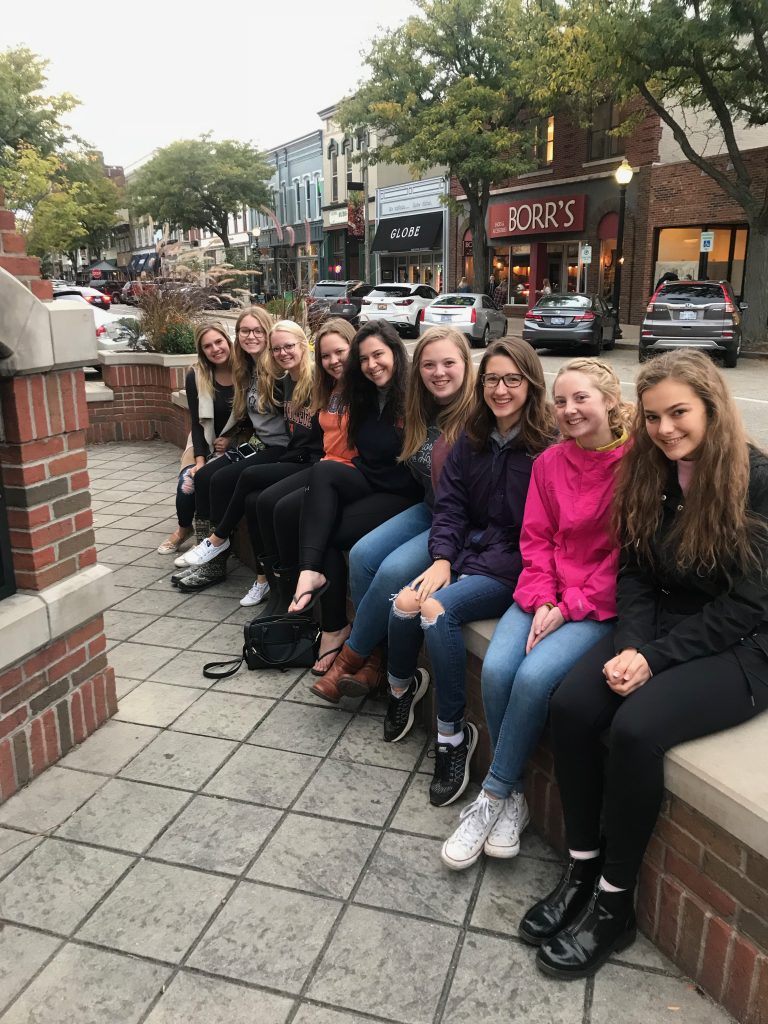
The 2019-2020 Common App essay prompts will be the same as last year. What was Class of 2019’s most popular pick? “Topic of your choice.”
Find out what the prompts are for 2019-2020.

Interested in STEM, a small campus surrounded by 4 accessible colleges in southern California? Check out our College Spotlight on Harvey Mudd College.
If you like mild winters, close proximity to a music hub, cowboy boots, and top-notch education, then check out our latest student College Spotlight on Vanderbilt University in Nashville.
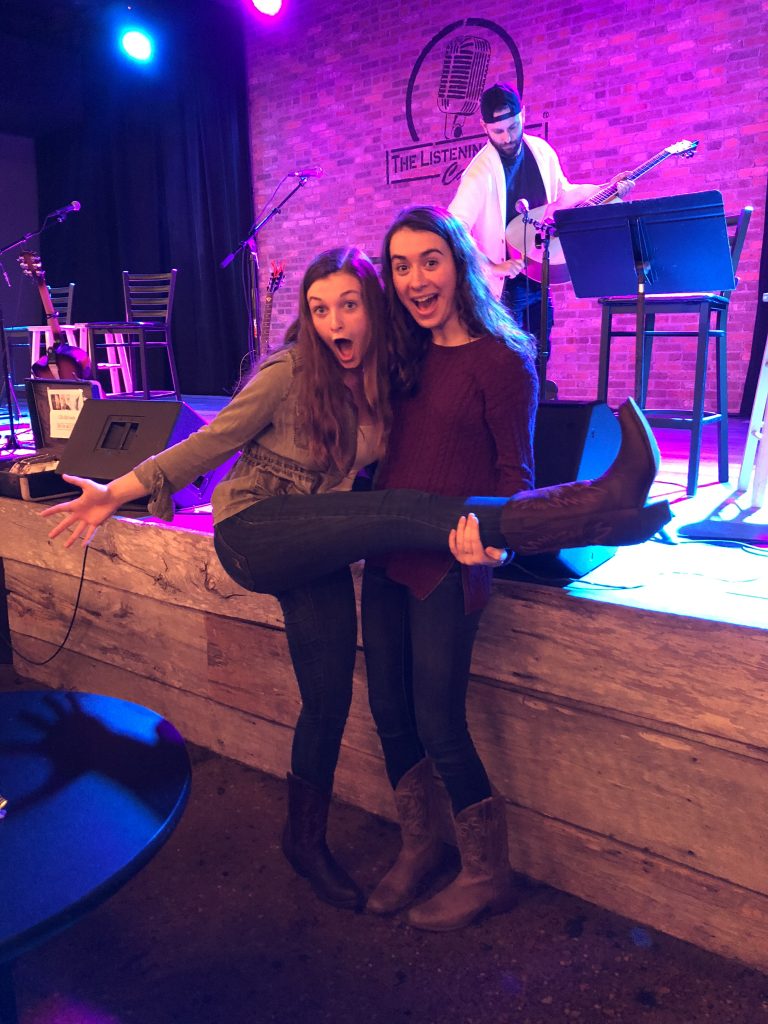
Read our January 2019 College Expert Newsletter.
Here are the topics in this month’s newsletter.
Read our December 2018 College Expert Newsletter.
Here are the topics in this month’s newsletter.
An invitation to a wedding in Napa Valley opened up the opportunity to tour colleges in the Bay Area. So in October of 2018, I was able to spend three nights in Palo Alto and visit 5 colleges. Every day was 75 and sunny. We loved Palo Alto with all the amazing restaurants, outdoor activities, and of course, the tech companies in Silicon Valley. Visiting Stanford was the highlight of the trip.
Located on the edge of Palo Alto, the heart of Silicon Valley, Stanford University’s vast campus houses seven schools (Humanities and Sciences; Engineering; Earth, Energy and Environmental Sciences; Business; Law; Education; and Medicine), eighteen research centers and institutes, twenty libraries, several sports stadiums, art museums, a hospital, a golf course, a concert hall, and a shopping mall. Stanford has more than 16,000 students, about 7,000 of which are undergraduates. The Stanford community currently boasts 17 Nobel laureates. Stanford is big on both academics and sports; the Cardinal have won 130 national championships and 115 NCAA championships.
Stanford University sits on more than 8,000 beautiful acres in California’s Bay Area. Its campus borders Palo Alto, Menlo Park, and Mountain View. The closest airports are in San Jose, 15 miles to the south, and San Francisco, 35 miles to the north. Palo Alto is known as the “Birthplace of the Silicon Valley,” since it is where the Hewlett Packard Corporation was launched. Palo Alto is a wealthy town with a population of 66,000 people, and it has a plethora of wonderful restaurants and shops.
Most students walk or bike to class; Stanford is a very bicycle-friendly university. Students can also keep cars on campus. About a quarter of Stanford students belong to the one of 15 fraternities or 14 sororities on campus. There are more 600 student organizations on campus, including publications, religious organizations, political groups, community service clubs, ethnic/cultural organizations, and LGBT organizations. A cappella groups, Taiko, and the Leland Stanford Junior University Marching Band are very popular.
All undergraduates are guaranteed four years of on-campus housing, and most undergrads choose to live on campus. After freshman year, many students try to live in one of the row houses. Some of the row houses have themes, such as the French House and the Italian House. Houses are either self-op (meaning they are run by the university and a personal chef cooks the meals) or co-op (meaning the student residents manage the house and cook the meals). Other options for housing include apartments and suites, fraternity and sorority houses, and traditional dormitories. Students living in dorms use their ID cards to purchase meals in dining halls, which offer all-you-can-eat food buffets with unlimited trips through the food service lines.
Tresidder Memorial Union offers fast food options and a Starbucks. There are also several wonderful restaurants on campus, including The Axe and Palm (specializing in burgers) and the Stanford Coffee House (called “the CoHo”), which has live music.
Stanford takes a holistic approach to admissions, and real people review each application, so there are no cutoffs for test scores or GPA. Admissions places most emphasis on transcripts and the degree to which students have challenged themselves academically by taking hard classes. When reviewing applications, admissions officer want to see that students have taken full advantage of the educational opportunities at their high school. Admissions reps are assigned to specific regions, and they get to know the high schools in their region very well; they know what each high school offers in terms of advanced and AP classes. Extracurricular activities are also important for admissions, but admissions prefers deep commitment to a few special interests over broad, superficial involvement. If students submit SAT subject tests scores, it’s best to have one subject in the liberal arts (i.e. literature, world history, US history, or a foreign language).
The Nov. 1 EA/ED deadline is just weeks away. How is your application coming? If you’re feeling behind or stressed, don’t worry! We know this is a crazy month and have scheduled Jam Sessions every Sunday throughout October and into November. Join us this weekend from 10-2 at THE EAGAN COMMUNITY CENTER. If you can’t make it, reach out to Sue, Ryan or your essay expert with questions. We’re here to help! #collegeexpert #collegeapplications #yougotthis
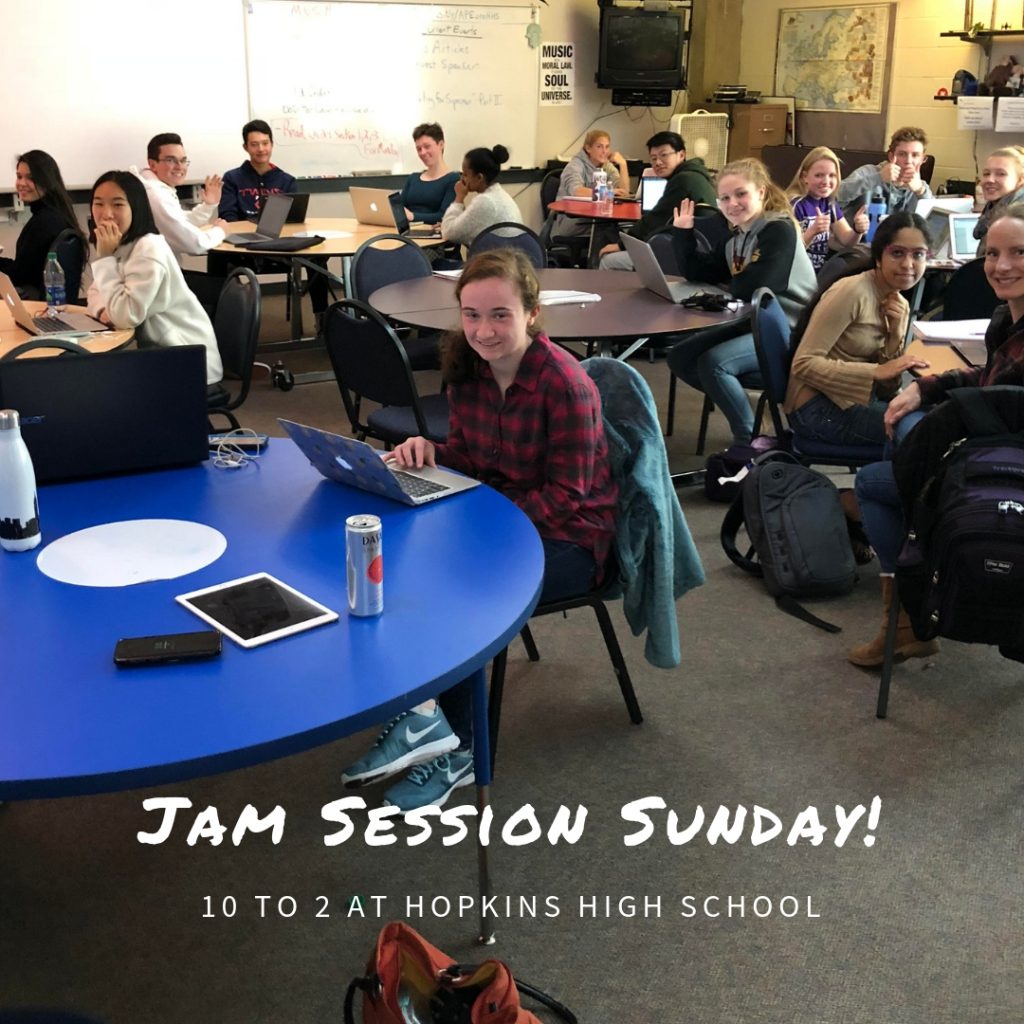
Welcome to our friends from @northcedaracademy! Thanks for making the trek from Ladysmith, Wisconsin to attend our College Expert jam session Sunday. We love the energy of a full house, and we were glad to have you join us! See you again soon! #collegeexpert #northcedaracademy #collegeexpertjamsession
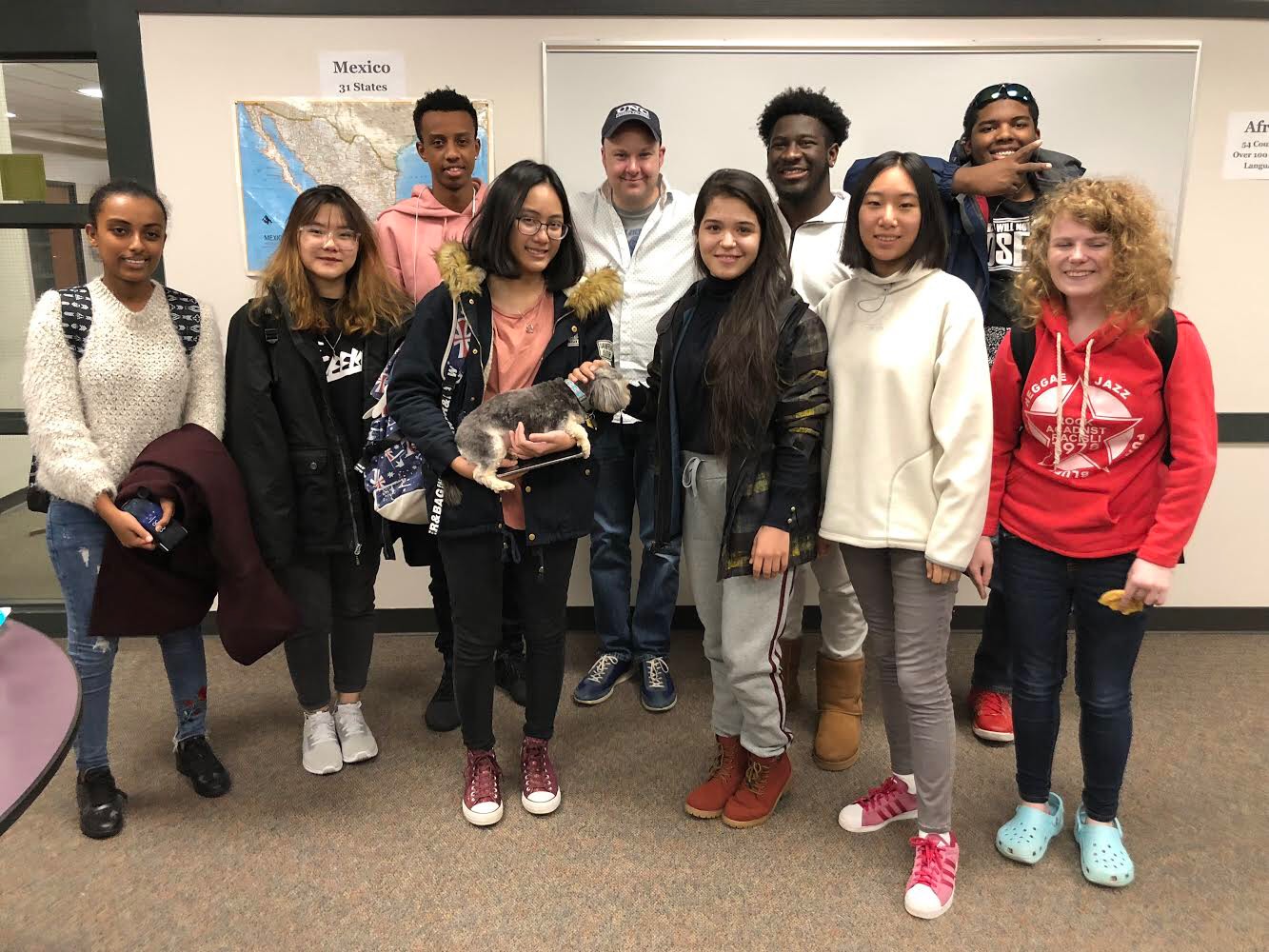
North Cedar Academy friends at Jam session
I was excited to drive to Sioux Falls, South Dakota, to meet with my students who are there and revisit Augustana. My visit to Augustana University showed me just how much this affordable, private, Norwegian-heritage liberal arts college has to offer. As the largest private university in the state, Augustana retains a strong alumni network and an enthusiastic “Augie” student body.
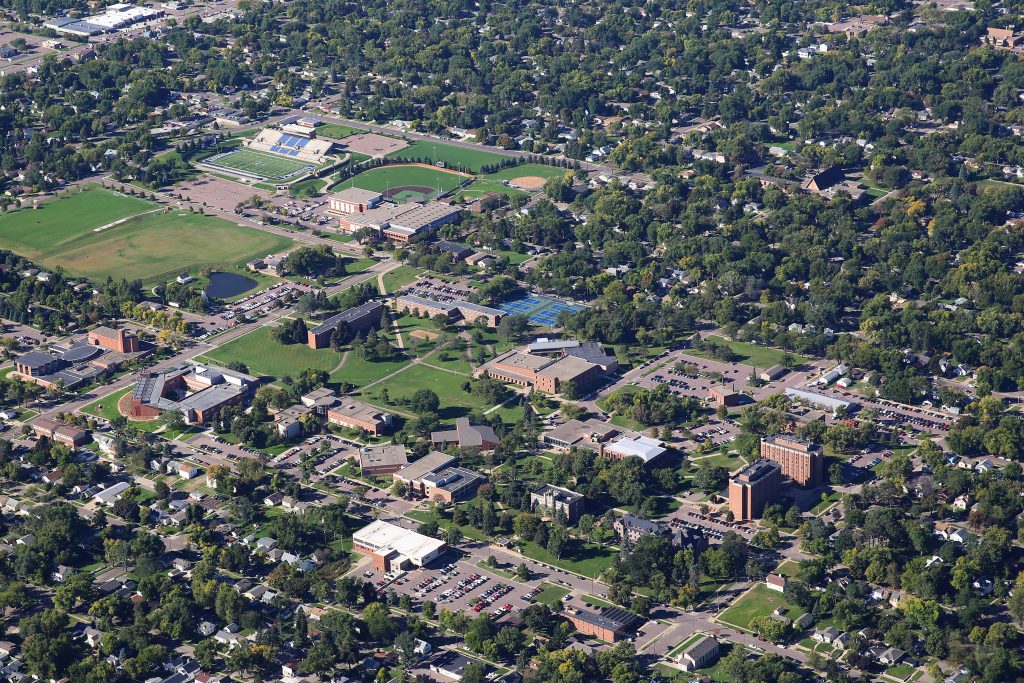
Often flying under the radar, Augustana may be of particular interest to those looking for a strong liberal arts education, more than 100 possible majors and minors, and is situated in a vibrant community not too far from home. I was thrilled to discover that Augustana University, with its 2000 undergrads, provides opportunities galore in this fast-growing city of Sioux Falls, which has a population of 250,000 people. Because Augustana is the only college in the city, notable local companies like Sanford Medical and Avera Medical benefit not only the town, but also the college in many ways, providing opportunities for internships, practicum’s, employment, etc.
An easy 4-hour drive from the Twin Cities, Sioux Falls is a cultural hub with a robust arts and theater community. Attracting top Broadway shows and musicians, Sioux Falls always has something going on. I stayed by the river and Falls Park, where 26 miles of biking and hiking trails surround the city. What I liked best about Sioux Falls, aside from the excellent restaurants and scenery, were the friendly people.
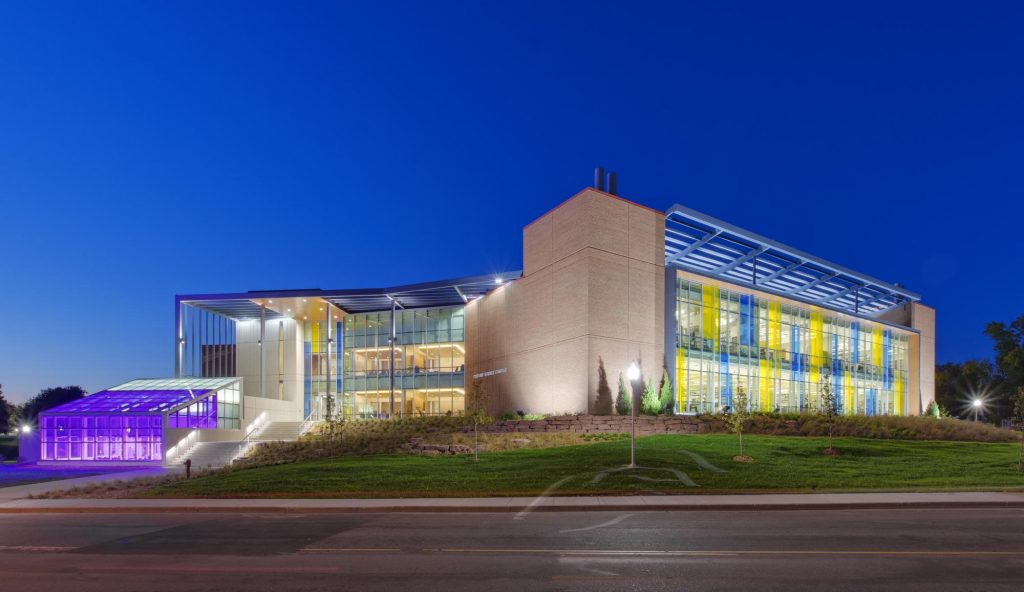
Froiland Science Complex
Augustana is known for its excellent undergraduate programs, all taught by professors. This liberal arts school requires students to complete a broad core curriculum, while also offering more than 100 undergraduate majors and minors to choose from.
“Inspired by the Lutheran scholarly tradition, students’ academic journey at Augustana University begins with an integrative First-Year Seminar. It continues through a broad liberal arts education in the humanities, natural sciences, and social sciences. Along the way, students will be challenged to examine thoroughly life’s foundational questions through conversation and academic inquiry as they explore faith, engage in service, and achieve an education of enduring worth.”
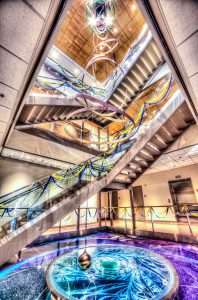
Pendulum in Froiland Science Complex
Standout programs include nursing, health sciences, pre-professional, and computer science, as well as more unique majors in sign language, data science and bioinformatics, among others. The huge medical community in Sioux Falls makes it an ideal place for health science students to explore the ample job opportunities. Augustana also offers some unique graduate studies programs in areas such as Master of Genetic Counseling in conjunction with Sanford Medical.
Also of note is the Civitas Honors Program, for those looking to enhance their education both academically and civically. “The Civitas Honors program at Augustana is centered on exploring the nature and characteristics of citizenship; at Augustana University, in the United States, and as part of a global community.” Civitas students also have the option to incorporate study and/or research abroad into their final vocation projects.
If engineering is your goal, Augustana has an excellent dual-degree engineering program. After earning a B.A. from Augustana in a major of their choice, students will then earn a degree in their chosen engineering specialty from either Columbia University (for a B.S. degree), or Washington University in St. Louis (where students can choose from a mix of bachelors and masters degree options).
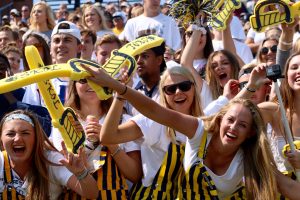
Game Day
Augustana students are smart and outgoing, and enjoy being involved in activities. The competitive Division II athletic program is part of the Northern Sun Intercollegiate Conference. Approximately 25 percent of students participate in athletics, but there is also no shortage of club and intramural sports on campus as well. The Augustana Vikings have top-notch facilities, including the new Sanford Fieldhouse, Elmen Center (basketball, volleyball and wrestling), Bowden Field (softball), Ronken Field (baseball), and Howard Wood Field (track and field), among others.
High school record is most important when considering applications at Augustana. Merit scholarships are plentiful for qualified students, and applications are accepted through the Common Application. According to the Augustana.edu website, an average student profile looks like the following:
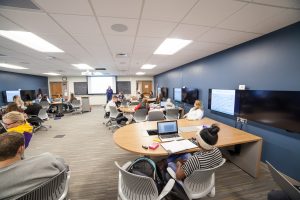
Science Class
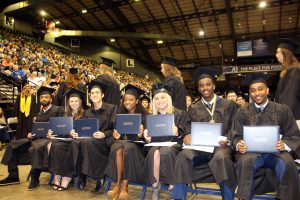
Graduation
Tuition for the 2018-1019 academic year at Augustana is $25,500, and this amount increases approximately 3 percent each year. Additional expenses not included in annual tuition amount include housing and meals, books and supplies, transportation and personal expenses.
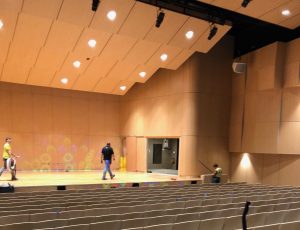
New concert hall
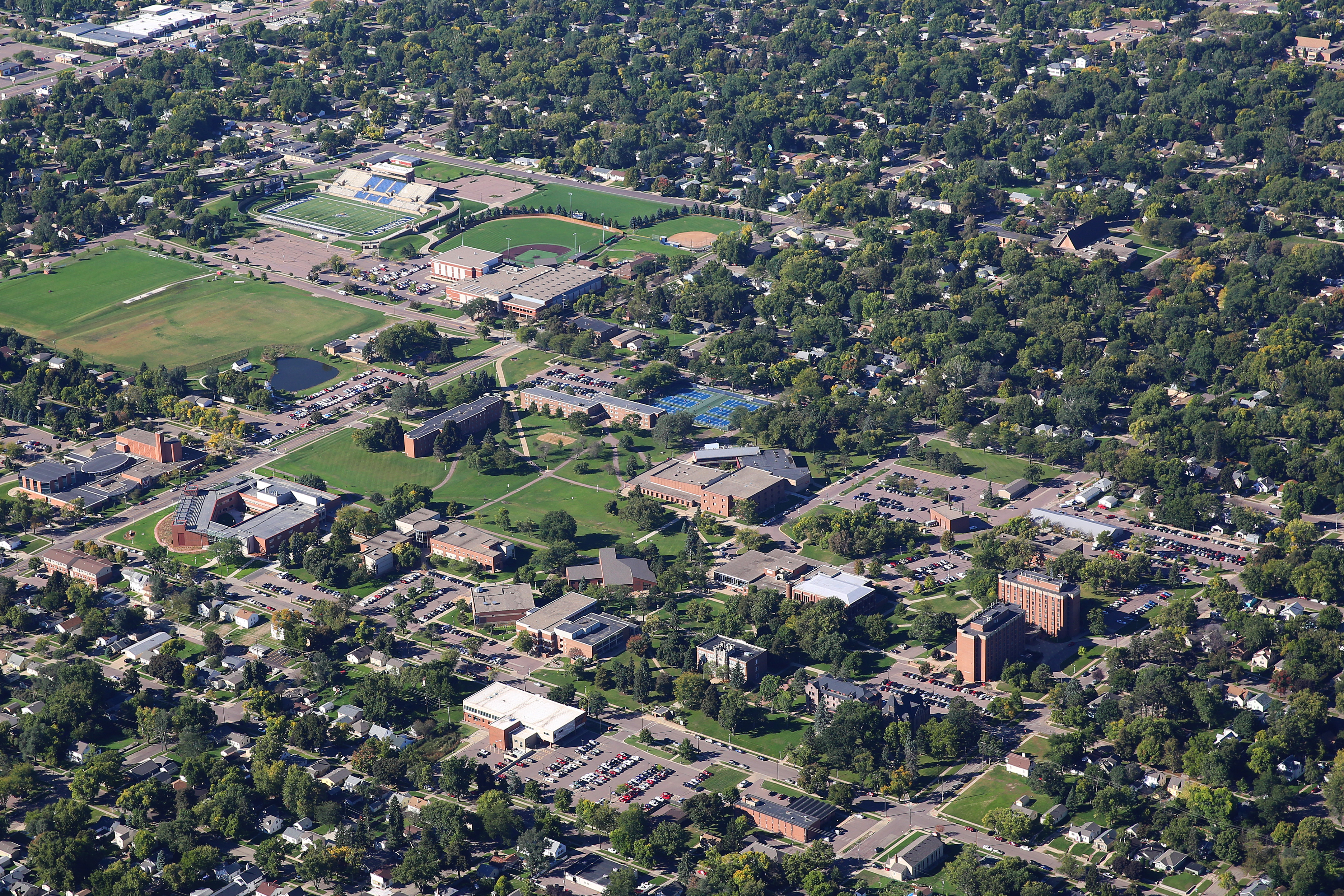
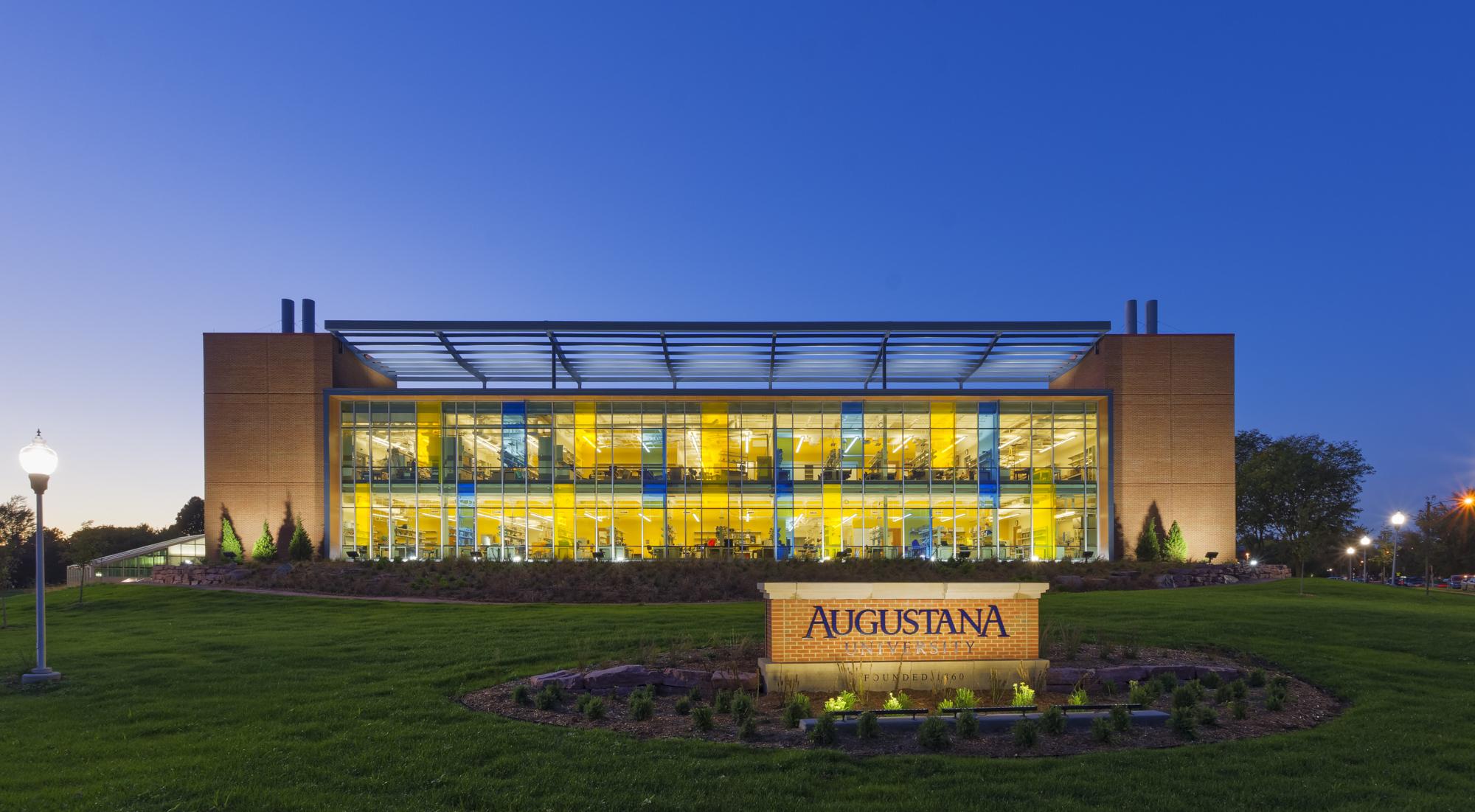

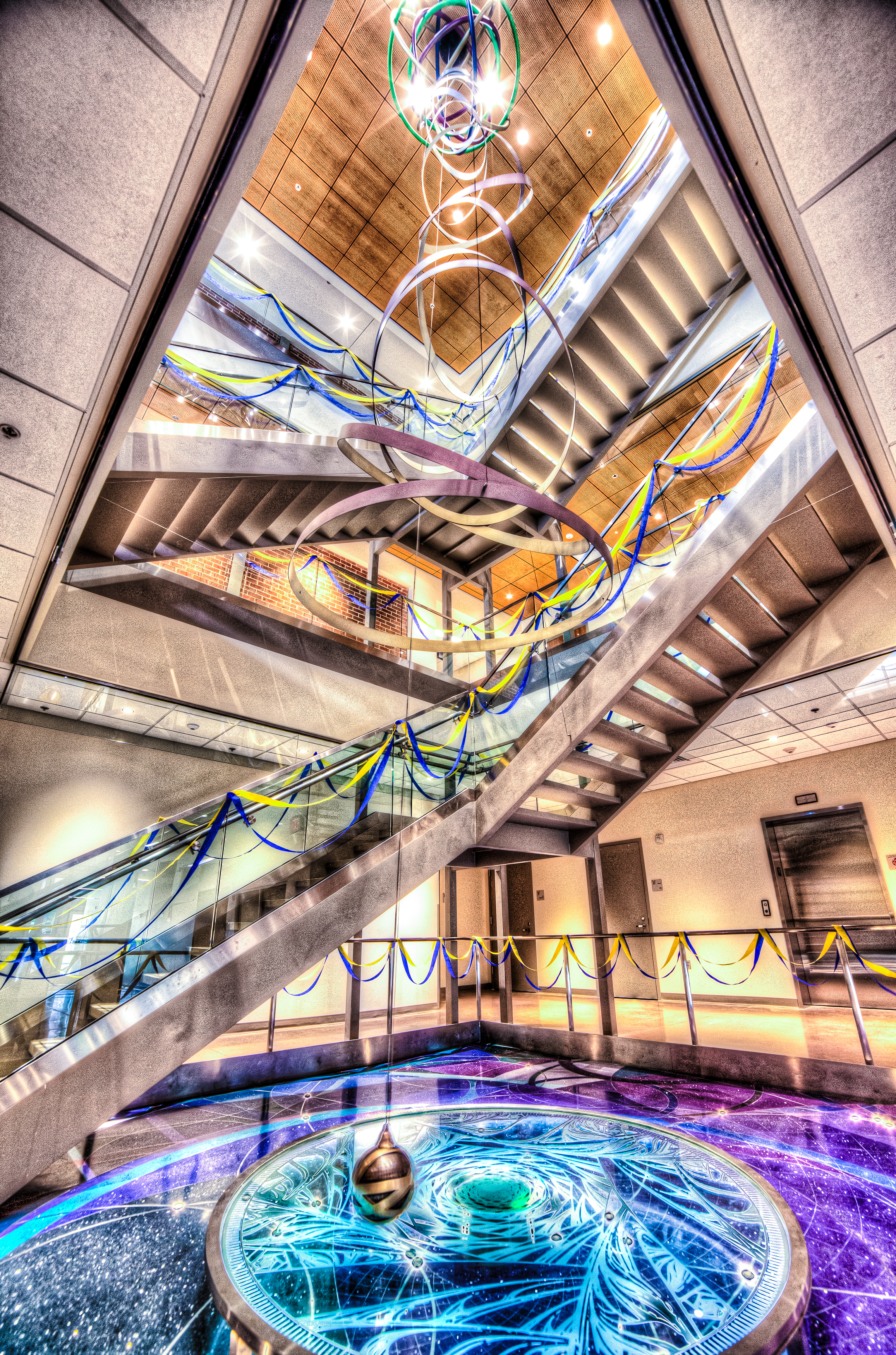
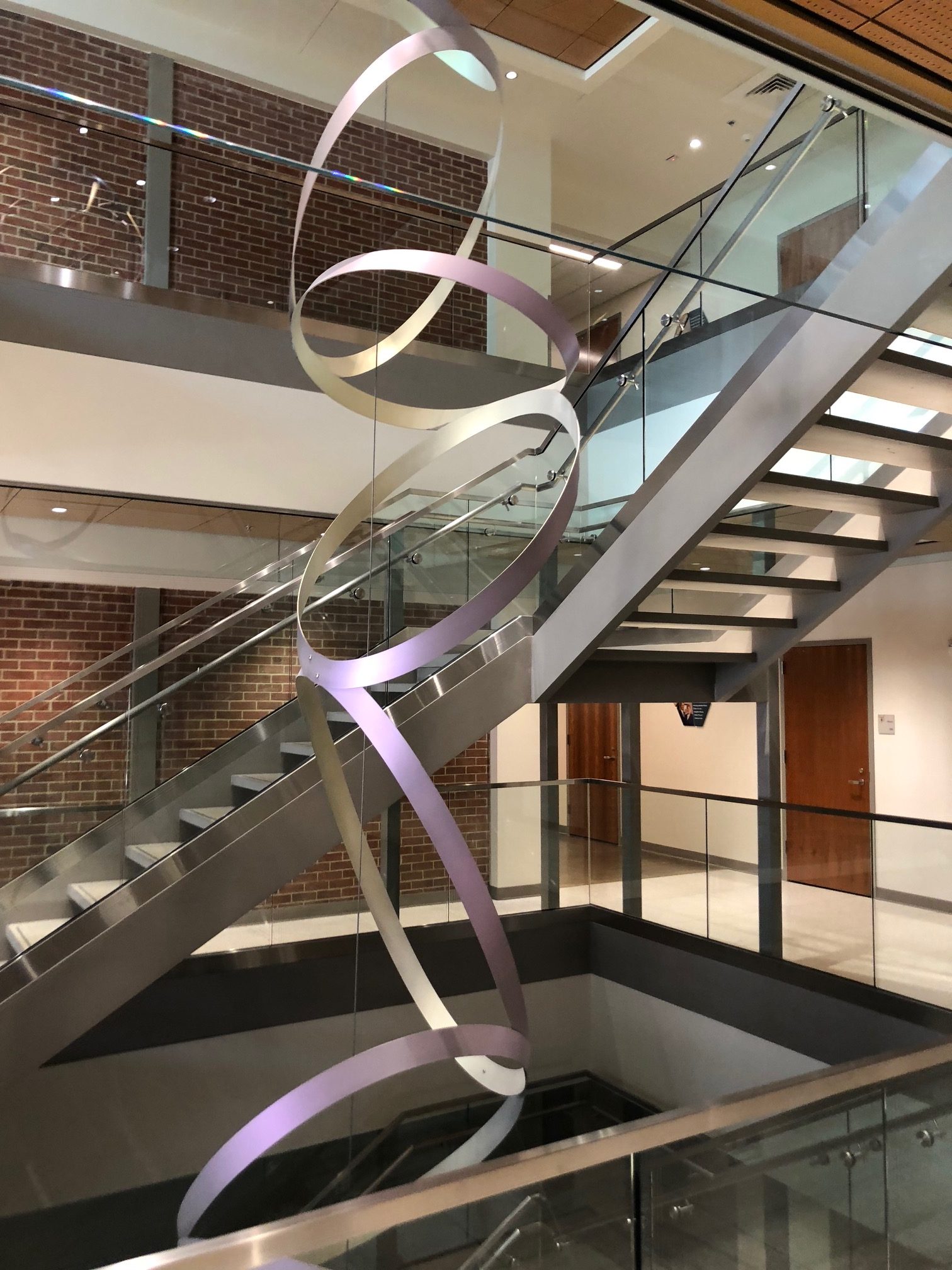
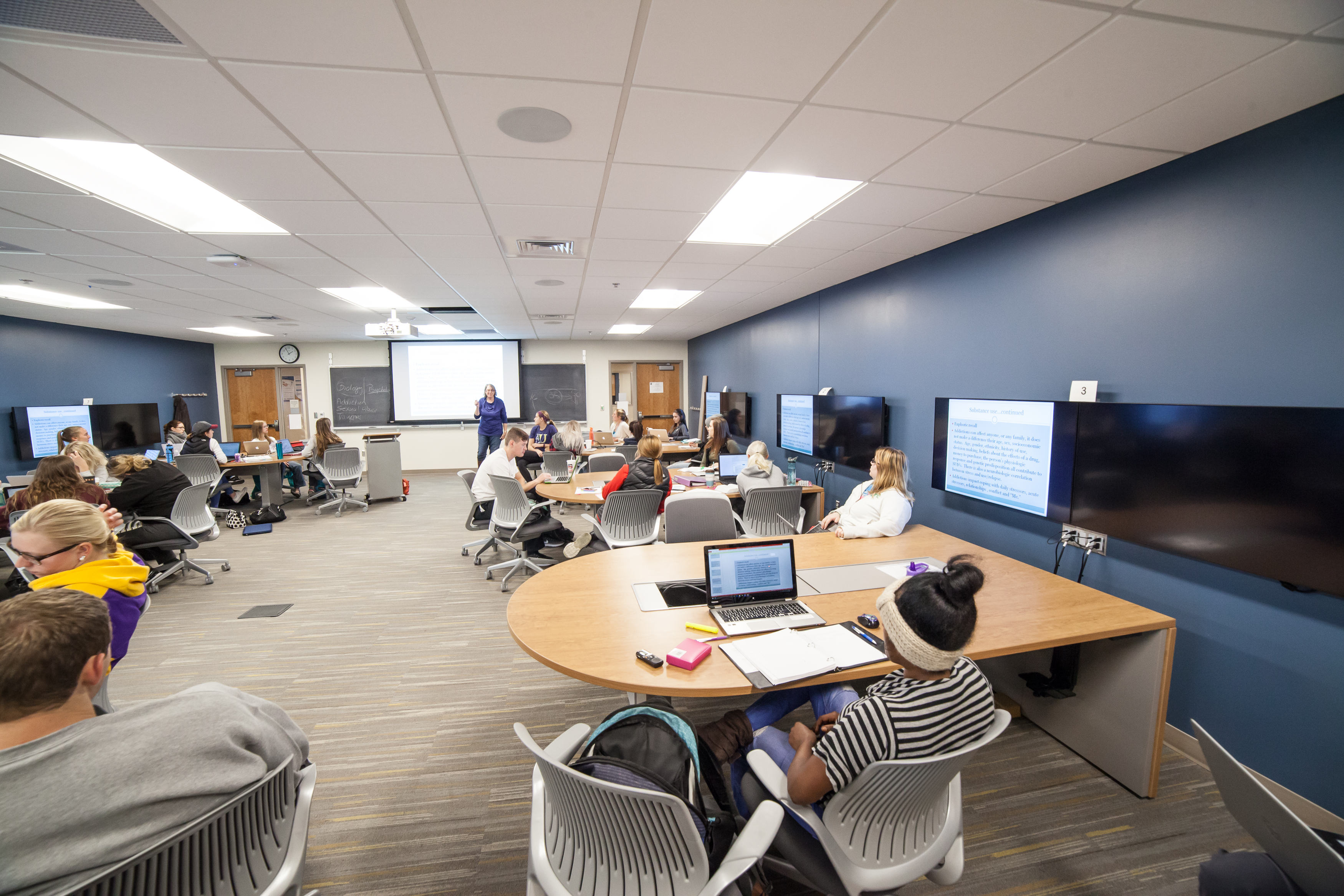
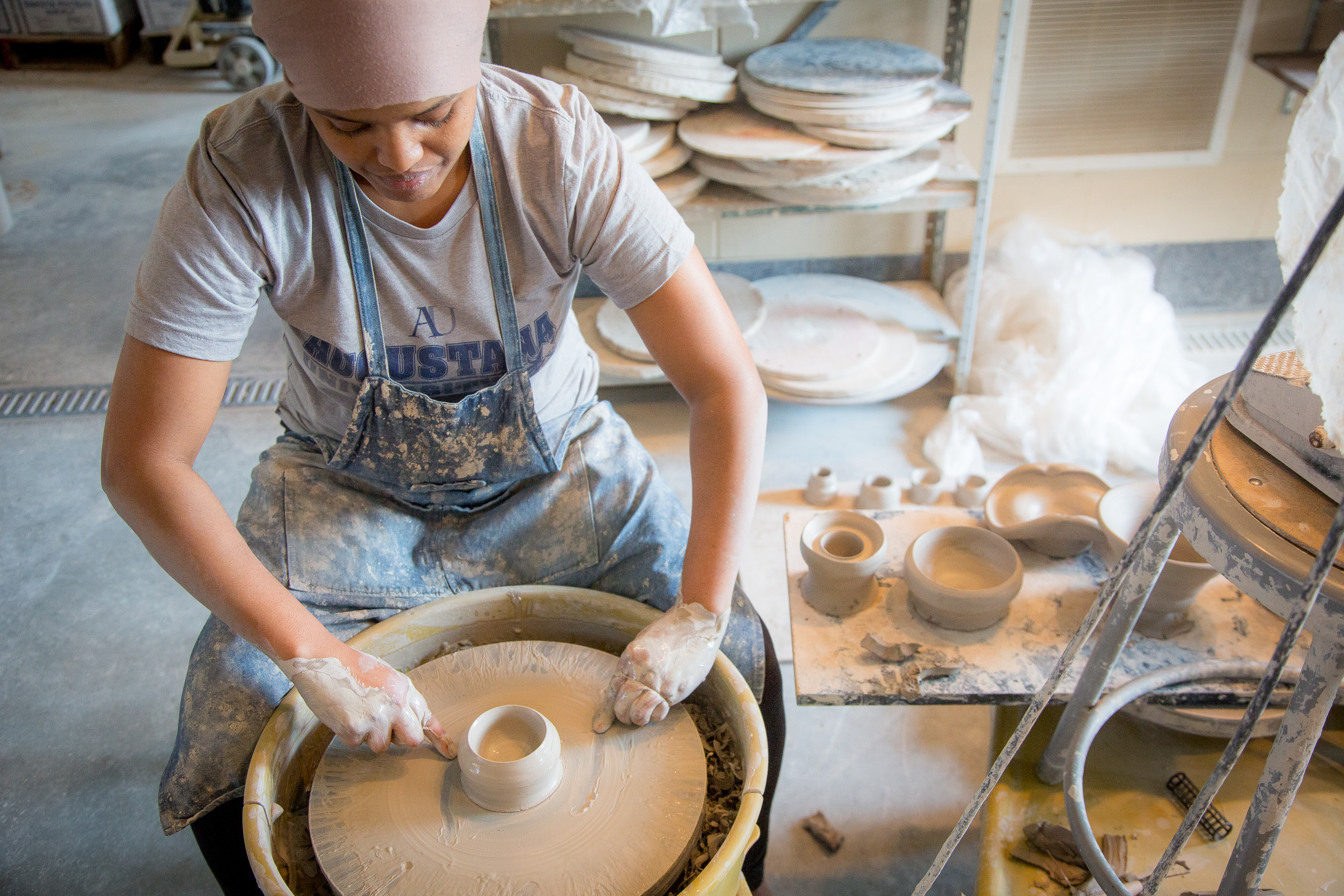
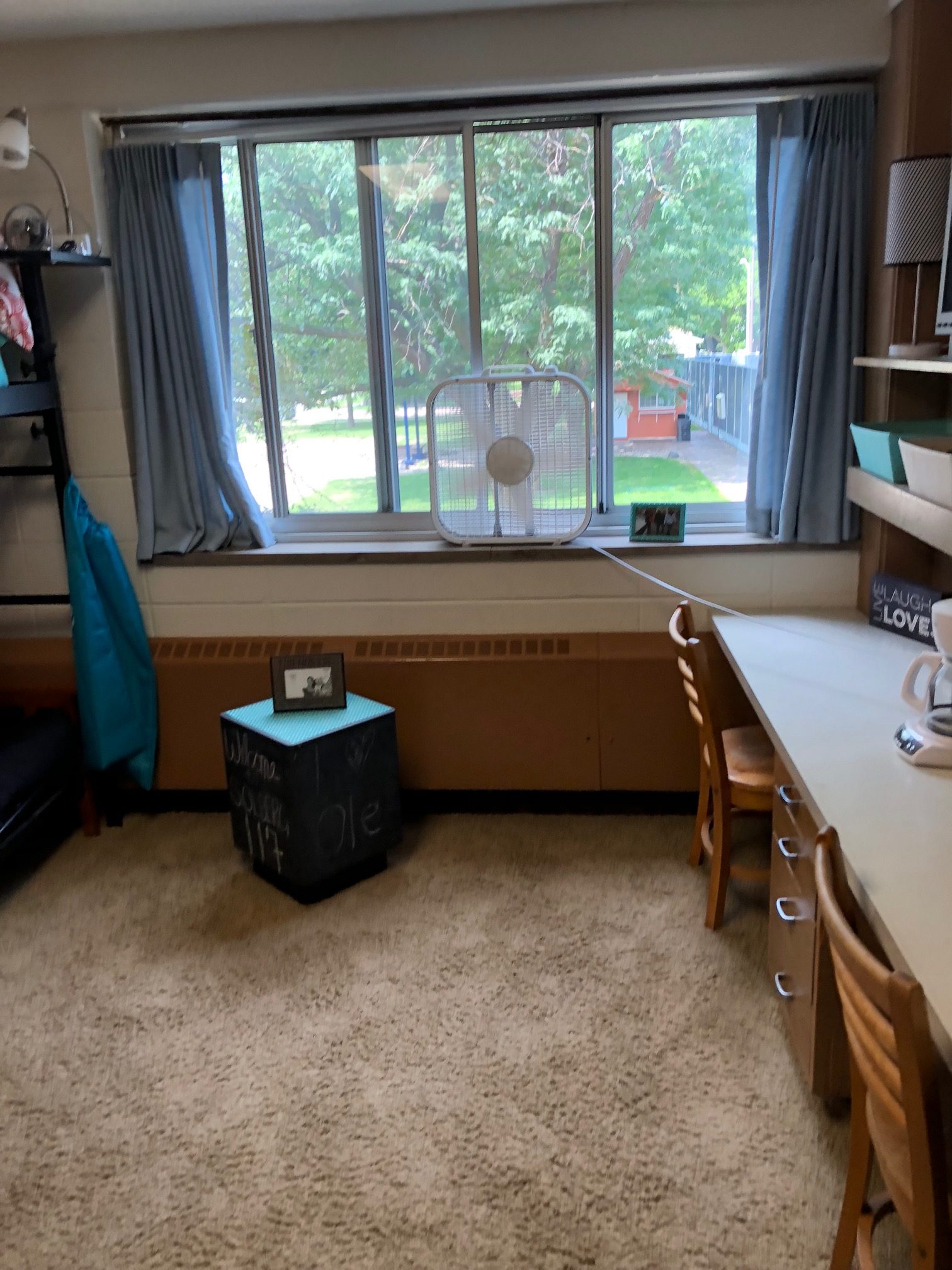
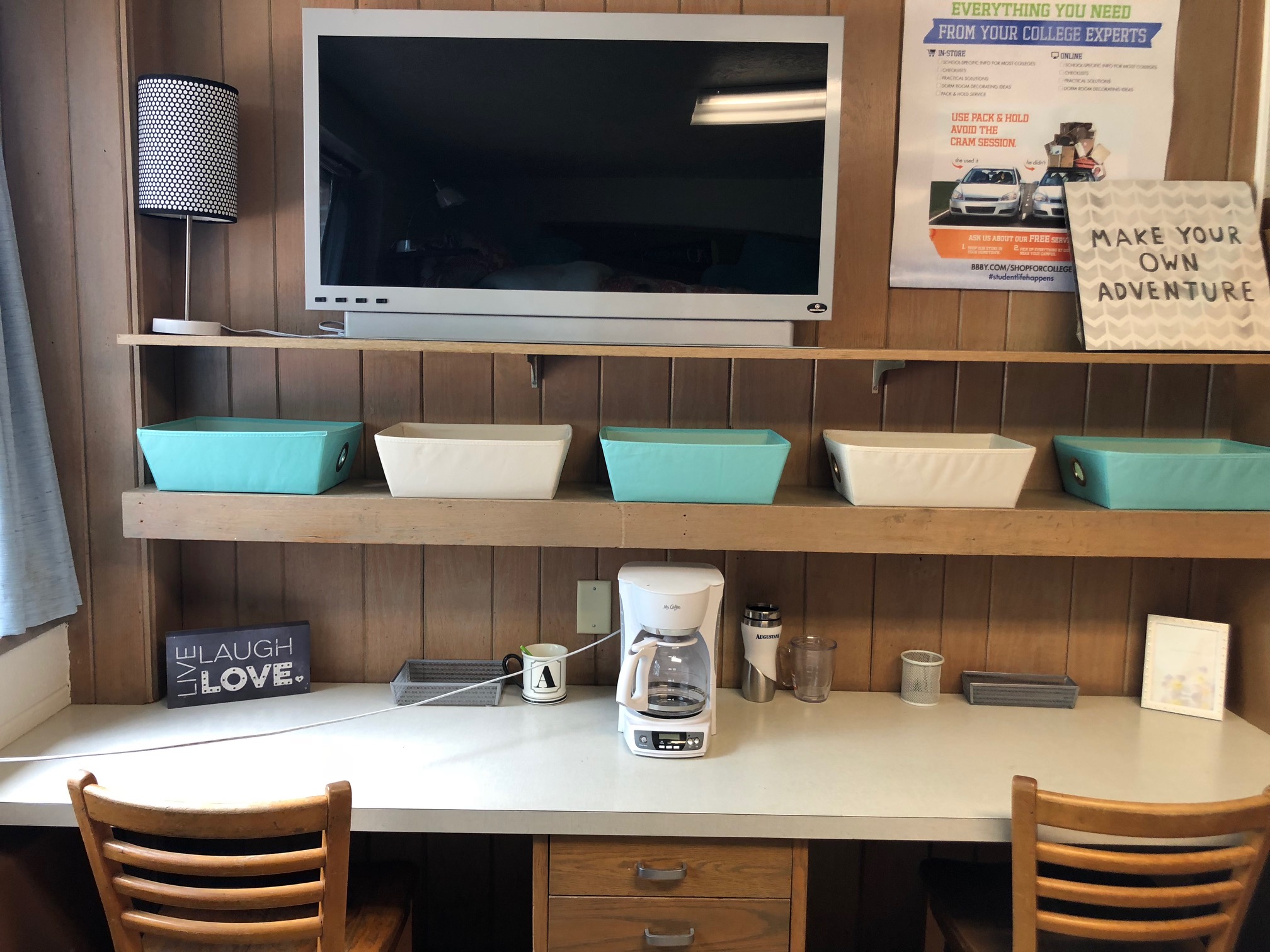
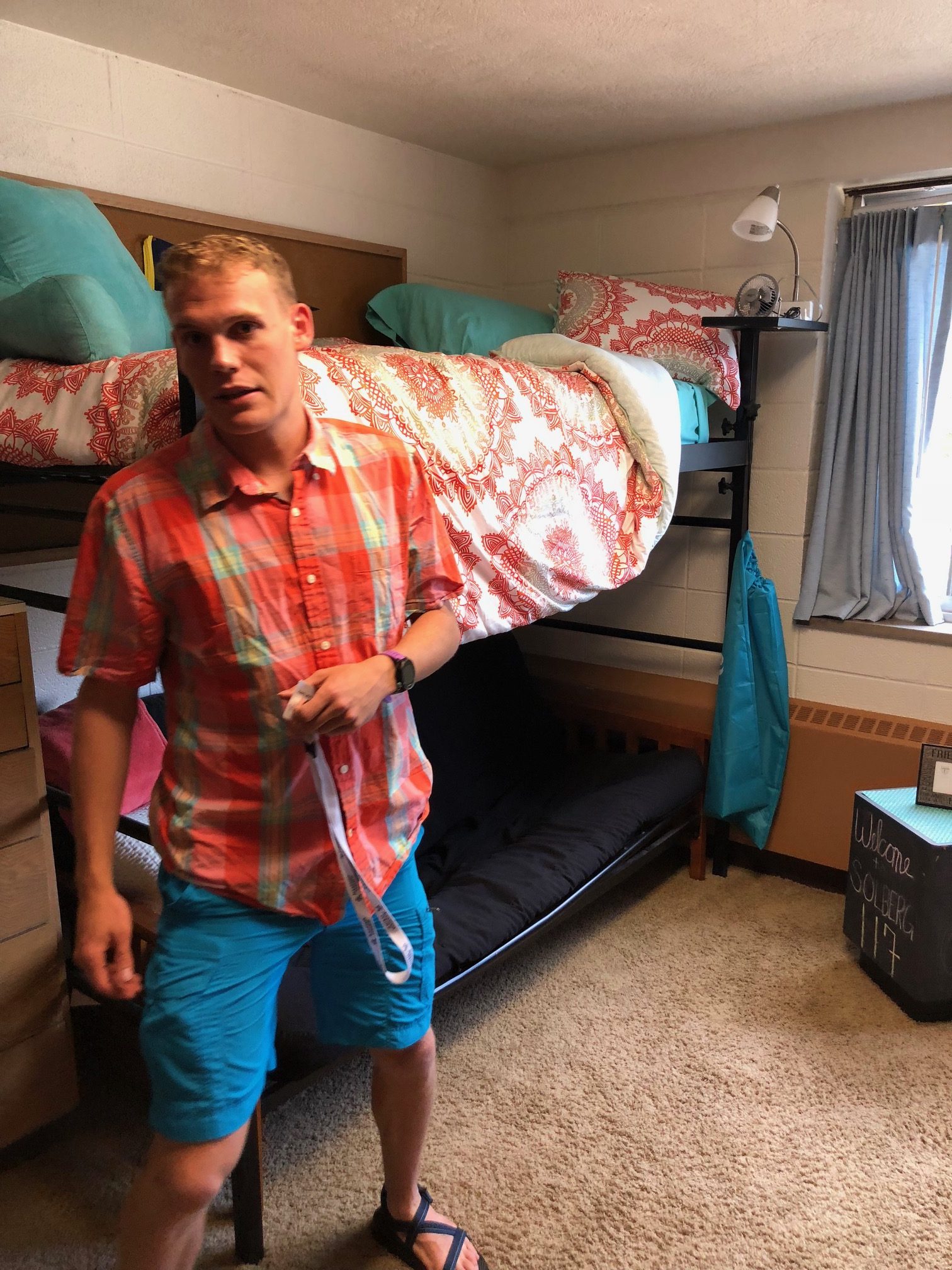
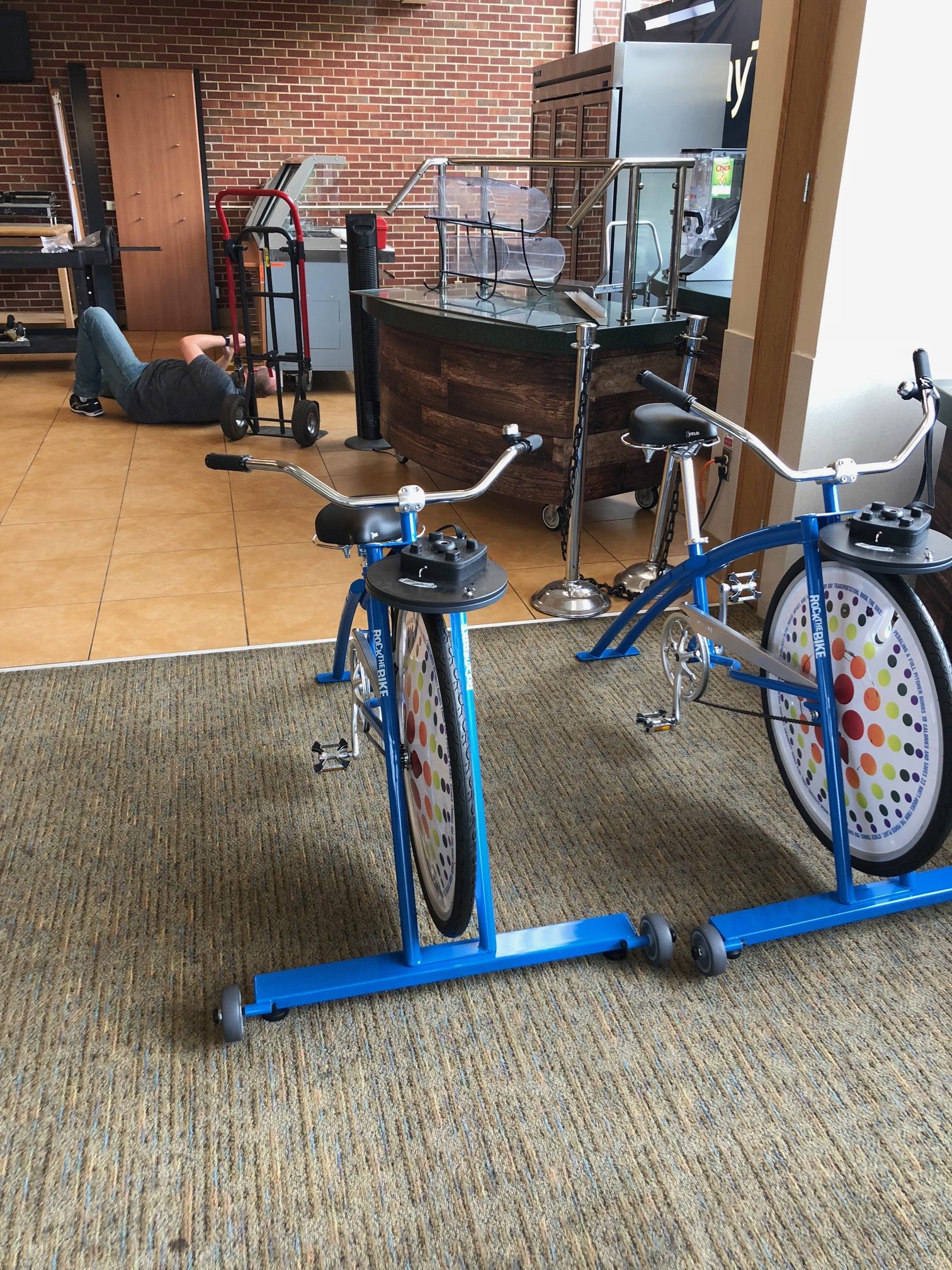

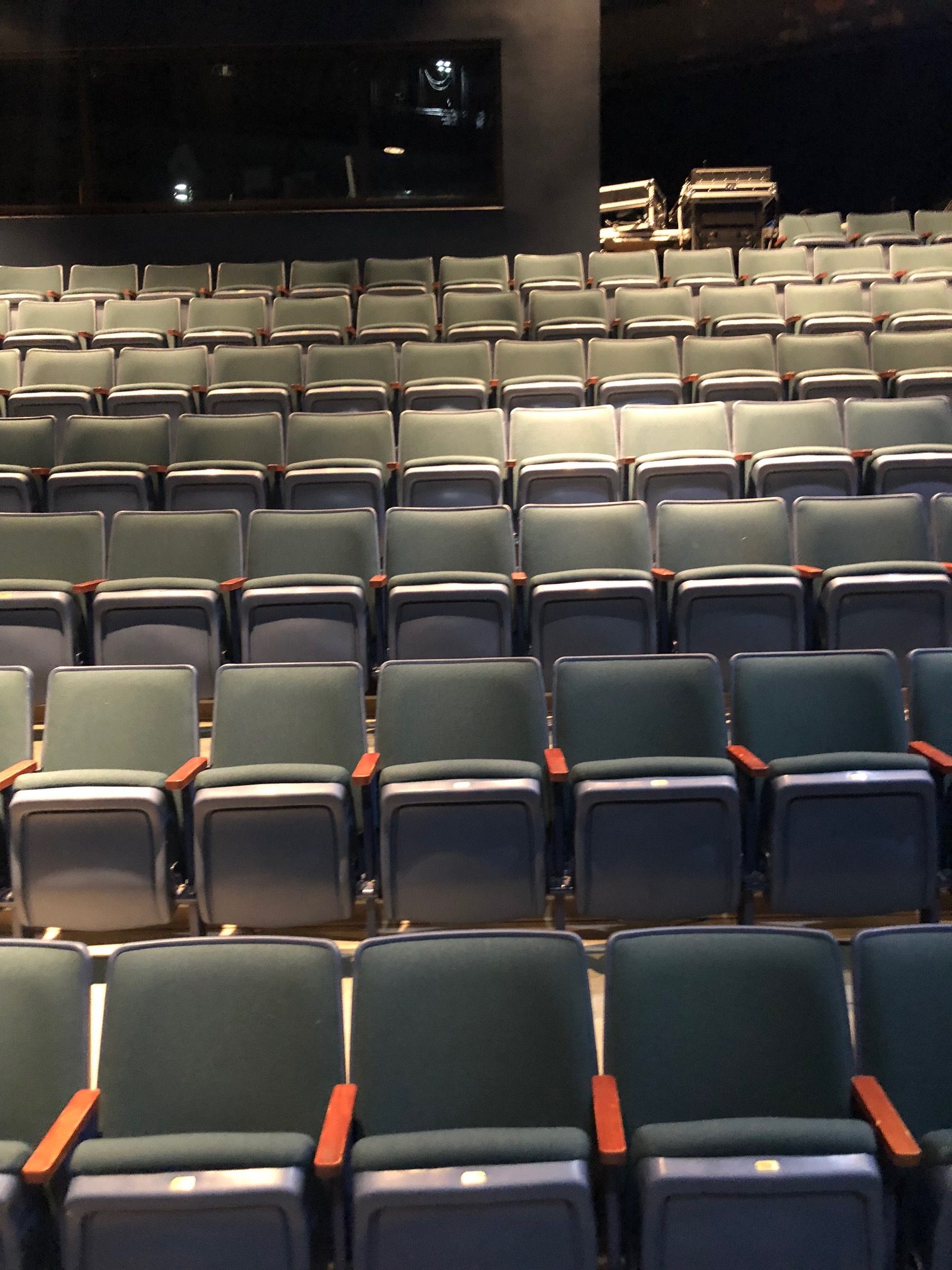

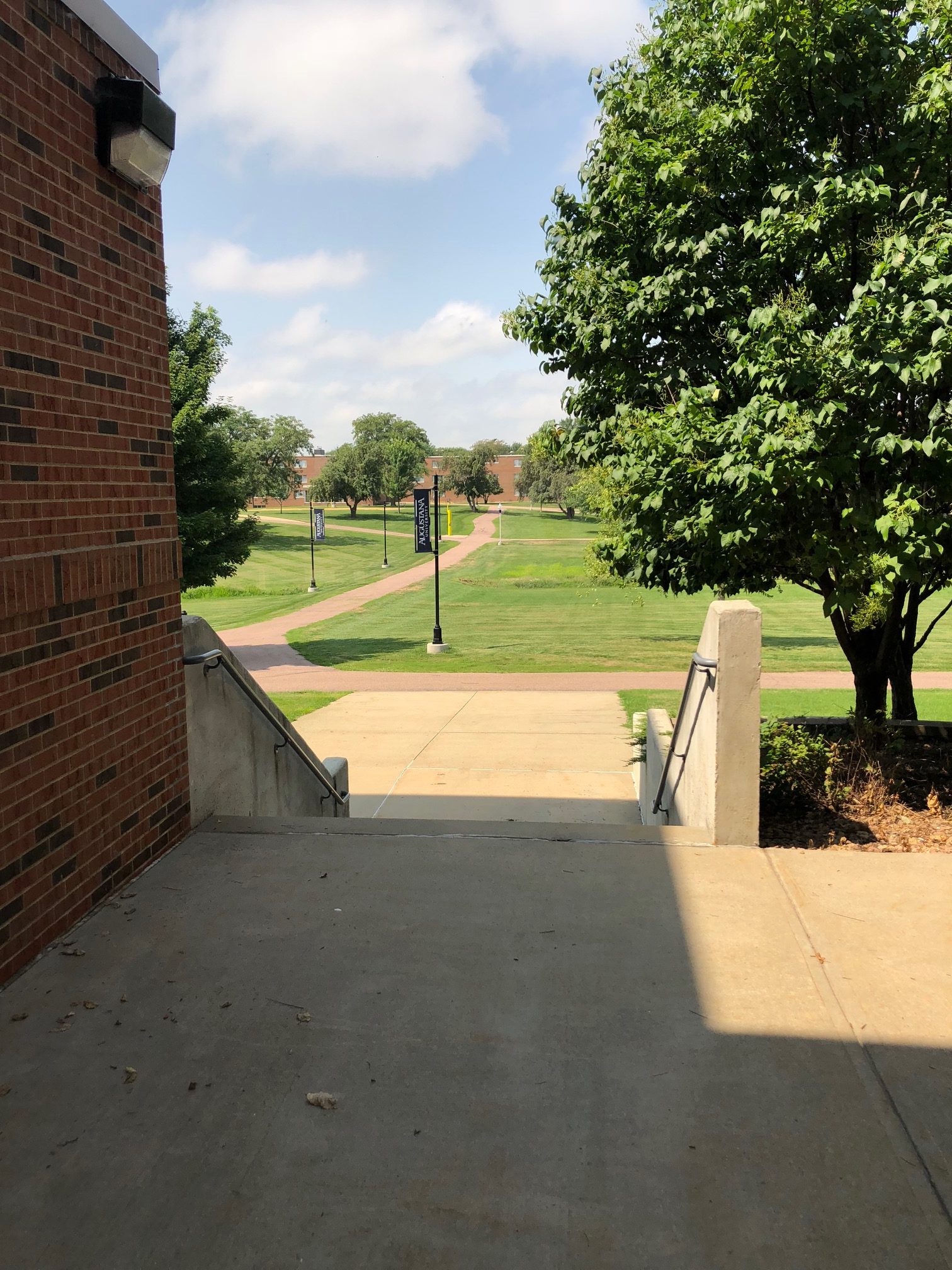
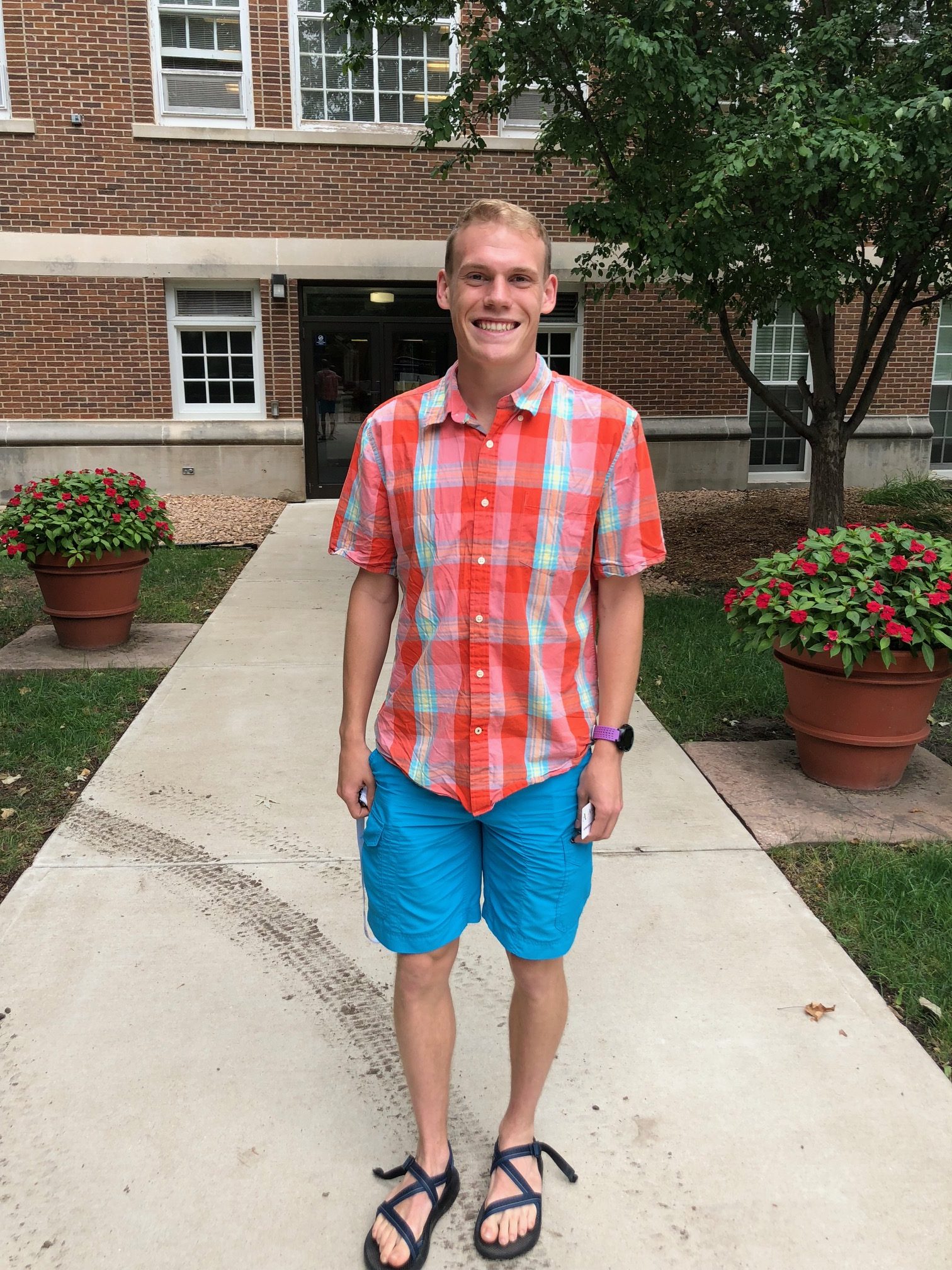
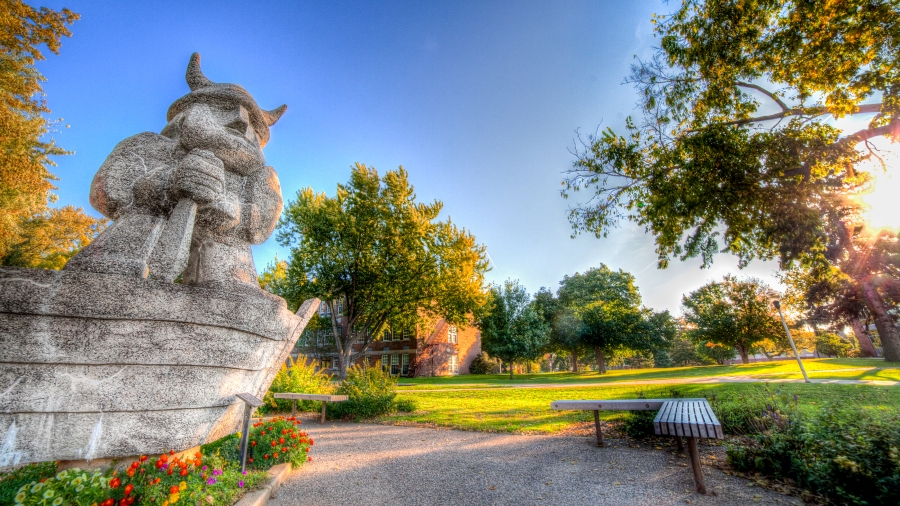
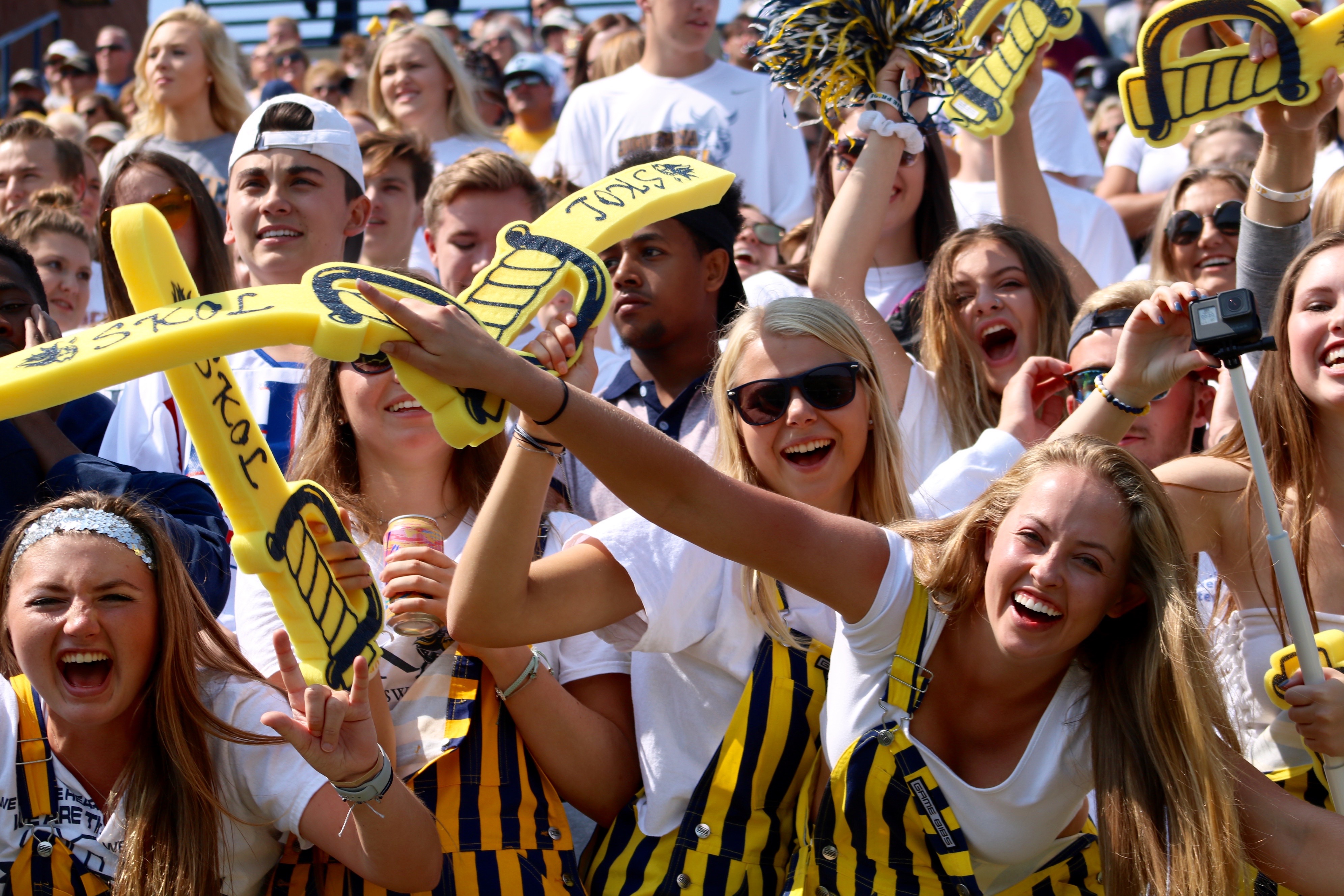

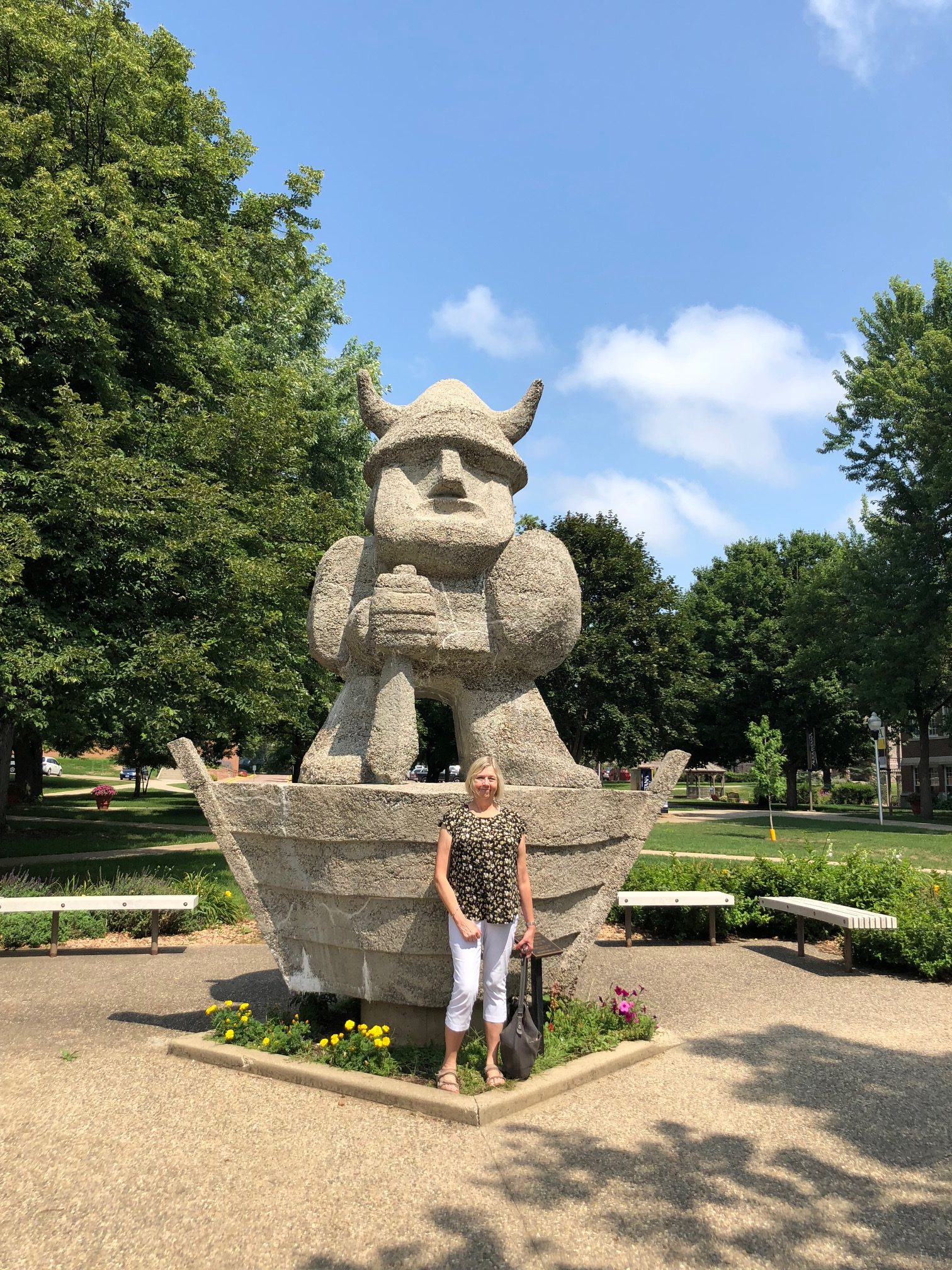
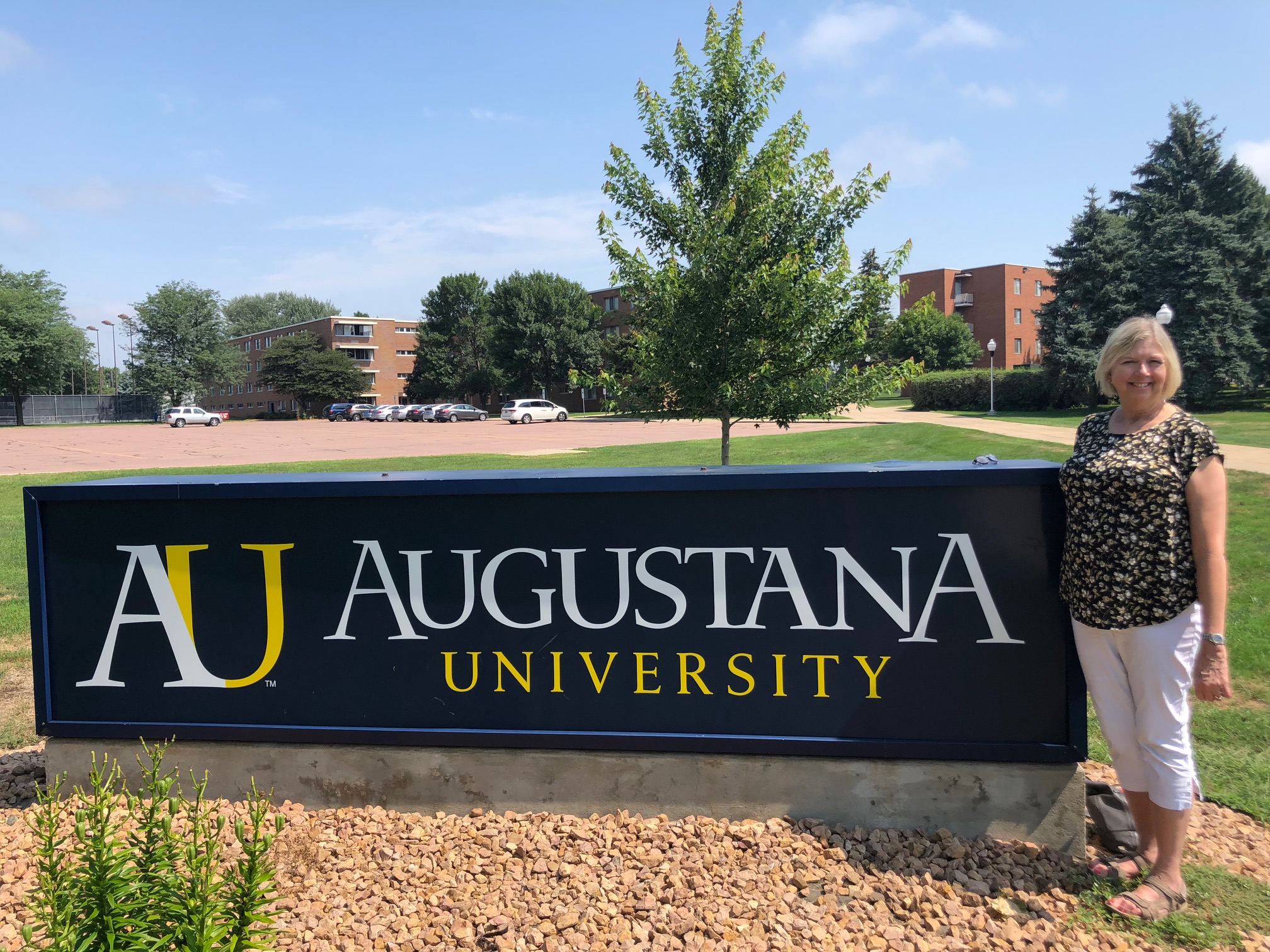
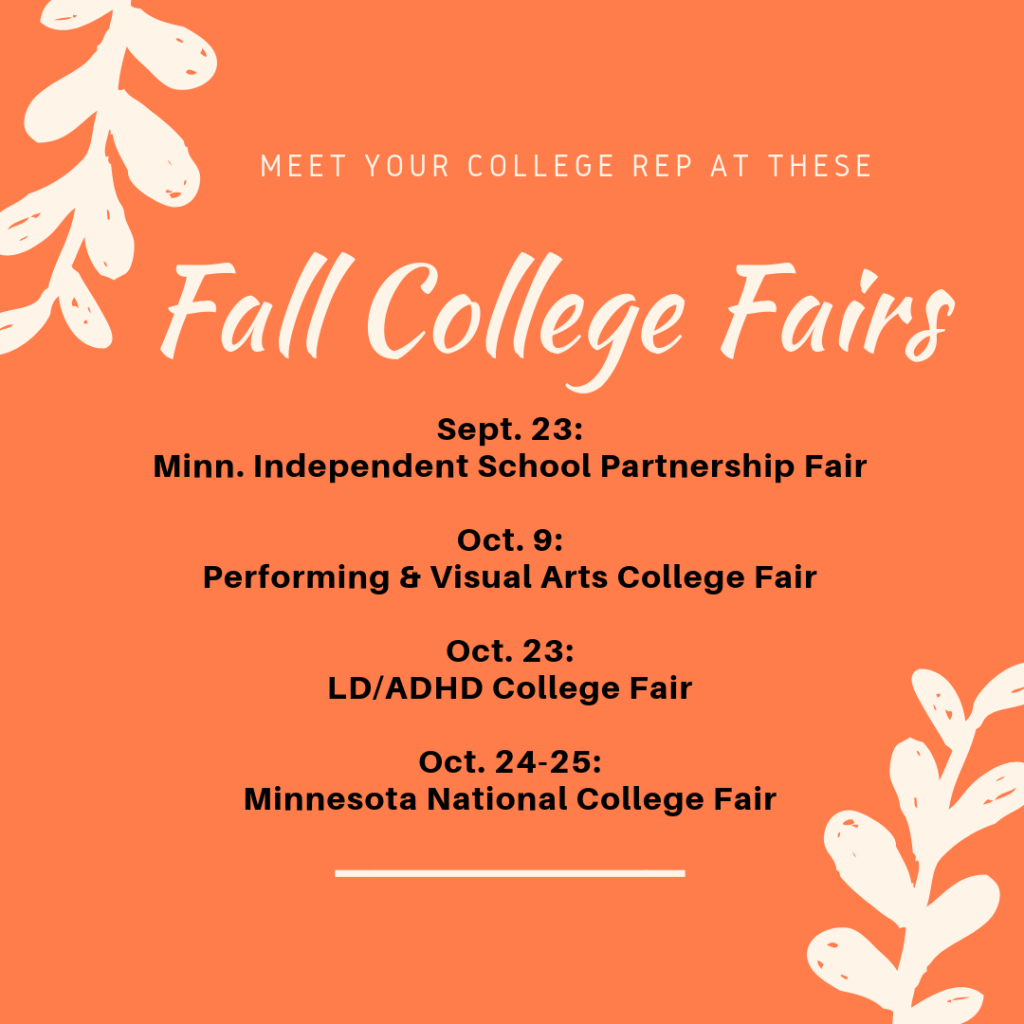
Don’t miss these opportunities to connect with your colleges!
Read our September 2018 College Expert Newsletter.
Here are the topics in this month’s newsletter.
Looking for a small women’s college in southern California? Read Arianna’s Freshman year update blog about Scripps College.
Love skiing, rock or ice climbing, and the great outdoors? Check out the Freshman Year Update Spotlight on Montana State University.
Dear Class of 2018,
Thank you for allowing us to be a part of your college planning journey. Congratulations and all the best as you go off to college. Please keep in touch and let us know how your freshman year goes. Enjoy the summer!
Sue, Ryan, and the College Expert Team
Did you know University of Manitoba has reciprocity with Minnesota? Read this Spotlight to learn more about how affordable it is to attend this university just 7 hours north of the Twin Cities.

The Class of 2018 embraced the application process with excitement, diligence, and flexibility. When the Common Application went live on August 1st, our students worked hard, supported each other and wrote some of the best essays we have ever seen! Being proactive, nearly 100% of our students applied either early decision, early action, priority, or rolling decision, and that speaks volumes of the hard work and focus this class has.
Drawing on vast knowledge and experience, the College Expert team recommended an eclectic mix of colleges, many of which were unfamiliar to our clients or which our clients would not have considered without a comprehensive discussion. One-hundred percent of our students will attend a four year college in the fall because of our philosophy of finding the the right fit. We’re proud to unveil the Class of 2018 College Expert statistics:
Our Class of 2018 students will matriculate to colleges across the country in 29 different states! This includes Ivy League, engineering schools, music conservatories, small liberal arts colleges, research universities, Big Ten schools, and colleges with in-state tuition. We strived to help families find ways to afford college tuition, and we were overjoyed with the resulting merit scholarships, grants, and aid.
We also experienced notable firsts. One of our students was accepted into the highly competitive University of Minnesota BA/MD Scholars Program and another student received the prestigious Hesburgh-Yusko Scholars Program at University of Notre Dame. Other firsts are Ithaca College, Seattle University, Point Loma Nazarene University, Rice University, and Harvey Mudd College. These are just some examples of the variety of the right fit colleges for a diverse and amazing class.
Our 2018 statistics reflect a stellar group of students who want to experience the world and build upon their knowledge. We were honored to prepare them for the next chapter in their lives. We thank you for making this year extraordinary and meaningful. We wish our seniors all the best with the journey ahead and hope to keep in touch.
Here is the list of colleges our students will be attending:
[ap_column_wrap] [ap_column span=”2″]Bowdoin College is a small, liberal arts college known for academic rigor and is one of the impressive and highly selective NESCAC colleges. (The New England Small College Athletic Conference.) Bowdoin has a diverse student body, made up of approximately 1,800 students from all over the world, 189 full-time faculty members, and a 9:1 student/faculty ratio.
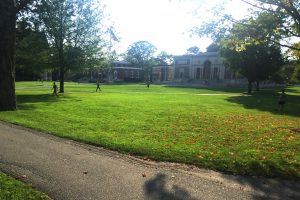
Nestled in the picturesque small New England town of Brunswick, Maine, is Bowdoin College. An easy 2-hour drive from Boston, and a mere 45-minutes from Portland, Maine, Bowdoin boasts a challenging curriculum designed to encourage students to learn, contribute and explore. The beautiful outdoor areas in and around Brunswick are not taken for granted by the active and curious students at Bowdoin.
At the core of Bowdoin College, is the idea that a student’s education should be focused on working toward a “common good.” Bowdoin College challenges its students to make an impact, in any number of ways, to benefit the “common good.” They view education is a privilege, and with that privilege comes responsibility. During my information session at Bowdoin, I had the strong sense that each and every person is valued and respected as a member of the Bowdoin community.
“Our focus is on the education of the whole person, so Bowdoin graduates can ‘be at home in all lands and all ages.’” Says Dean Tim Foster, quoting a passage from “The Offer of the College” – a 100-year-old philosophy still relevant to today’s students. Students applying to Bowdoin should read “The Offer,” and think about which aspect of the statement they relate to or agree with most.
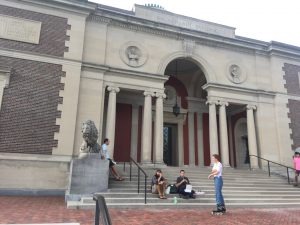
Students seeking a liberal education at Bowdoin prepare for a life of purpose through appreciation of cultural and societal differences in our globally connected world, where everyone has value, and deserves respect.
Bowdoin offers more than 40 majors, as well as undergraduate fellowship opportunities for research. As part of the curriculum, students complete at least one full-credit course in each of five distribution areas along with a first-year seminar in their first two years of study, declaring a major in spring of the sophomore year. The flexible nature of the distribution requirements and ample support from student advisors, make it easy for students to come in as “undecided” and discover a career path that fits their individual interests. For graduation, students complete a minimum of thirty-two courses, leaving ample room for exploration in the curriculum.
As an integral part of Brunswick, Bowdoin opens its doors to the community by offering the unique opportunity for residents to audit classes.
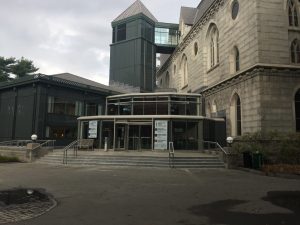
Students participate in any number of clubs and organizations on campus and in the community. During my visit, our student-speaker recommended students join three things, and get involved. He joined curling, outing club, glee club and a satirical newspaper.
All first year students will live in one of eight first year residence halls, also known as “bricks,” on the central campus.
After first year, upperclass students can choose one of several options:
Bowdoin is considered to be a “little Ivy” and is very selective with under a 15% acceptance rate. Bowdoin is looking for students who will make a difference in the world.
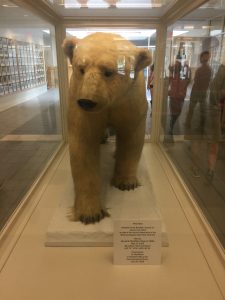
Common application or Coalition application required
Hint: contact Bowdoin rep early to set up
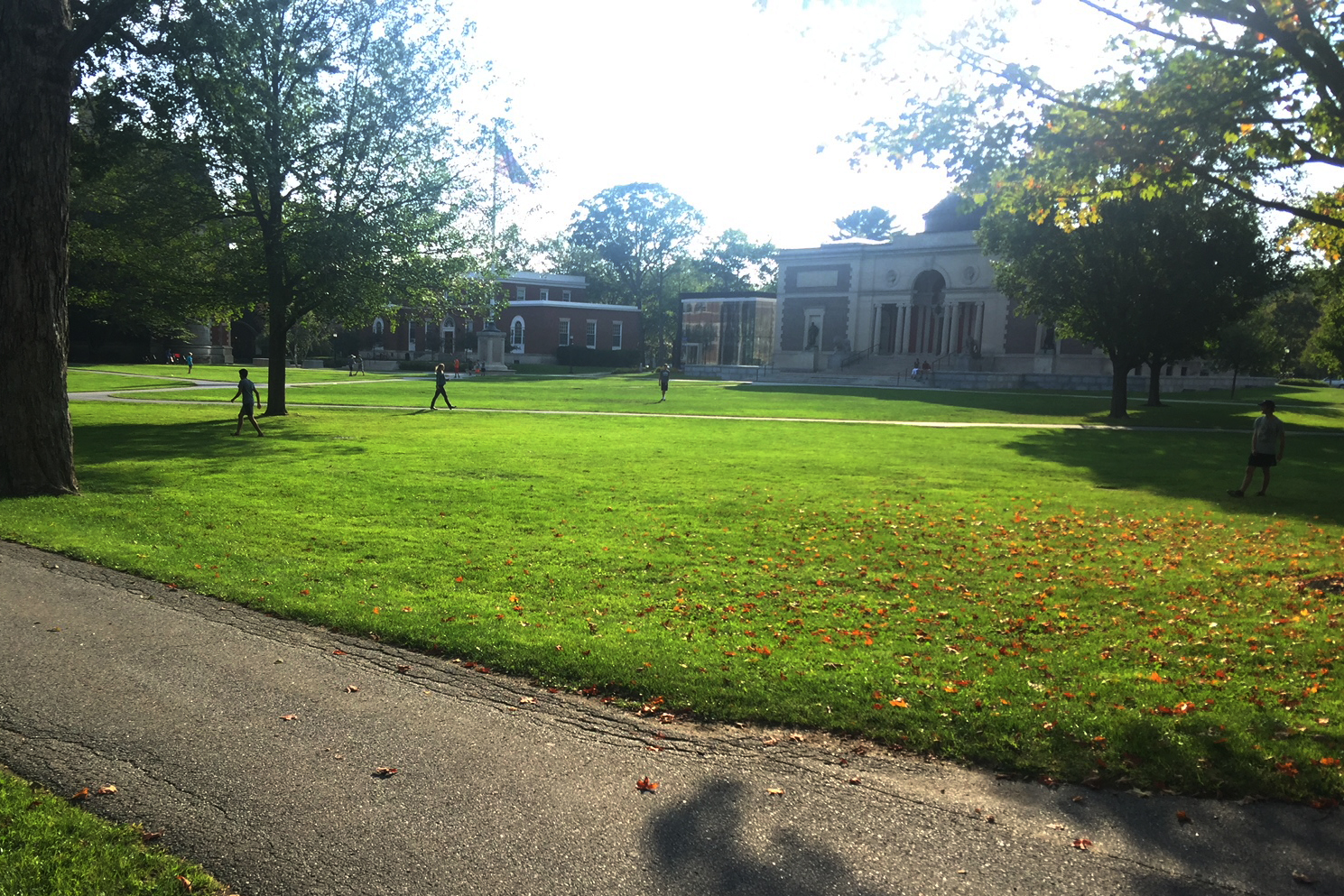
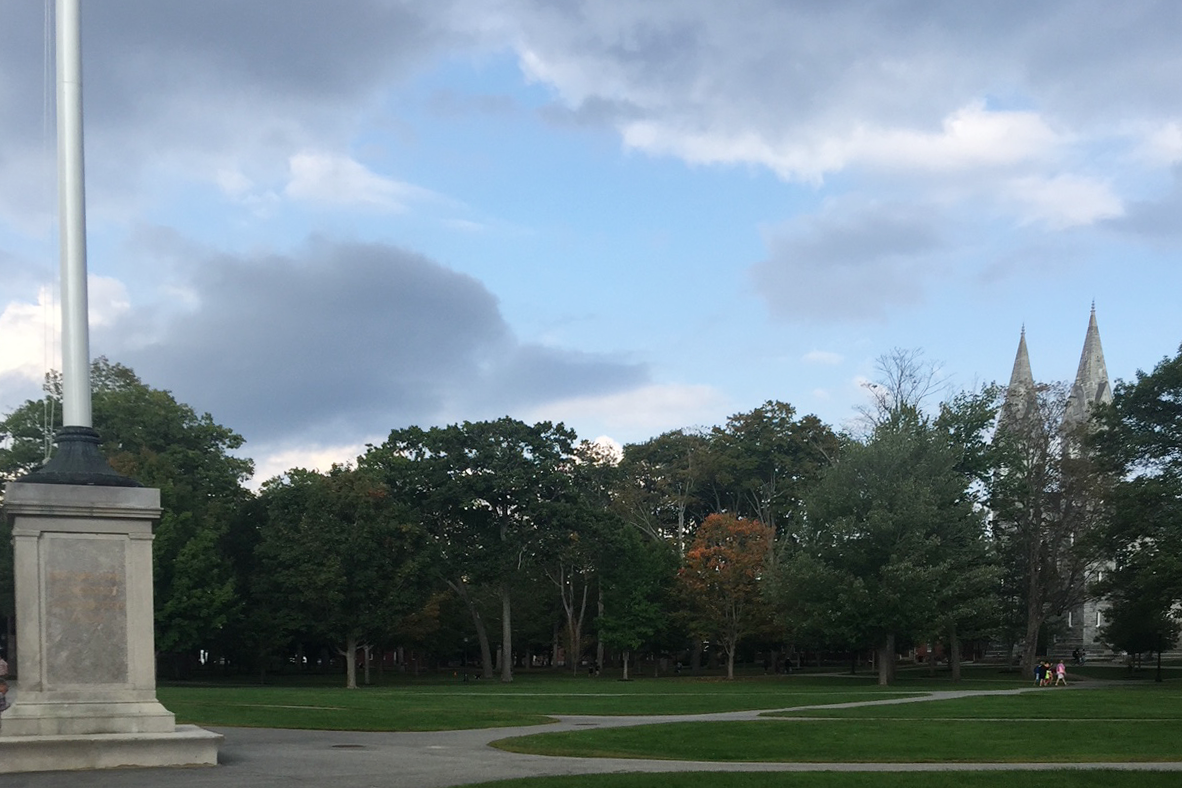

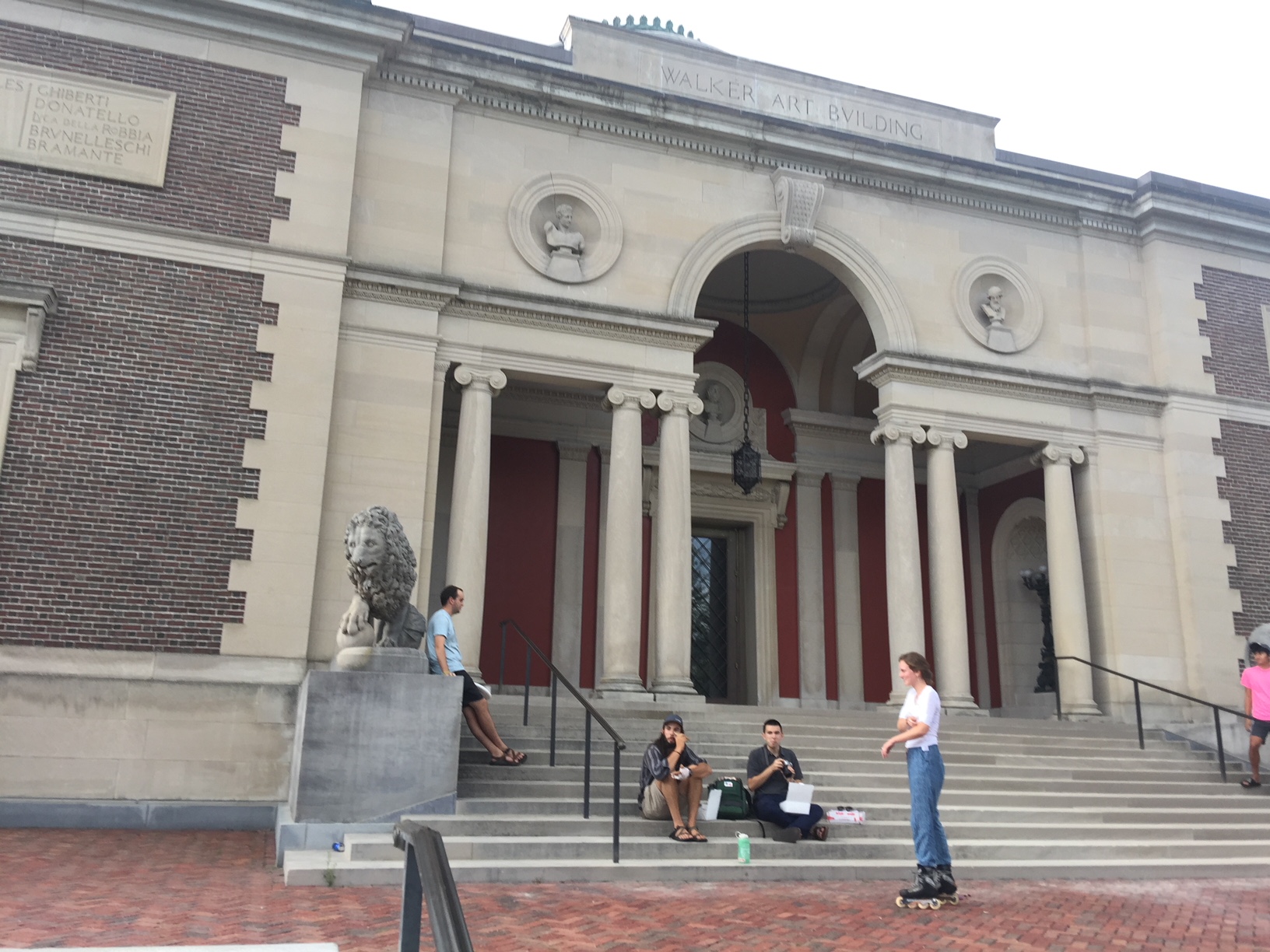
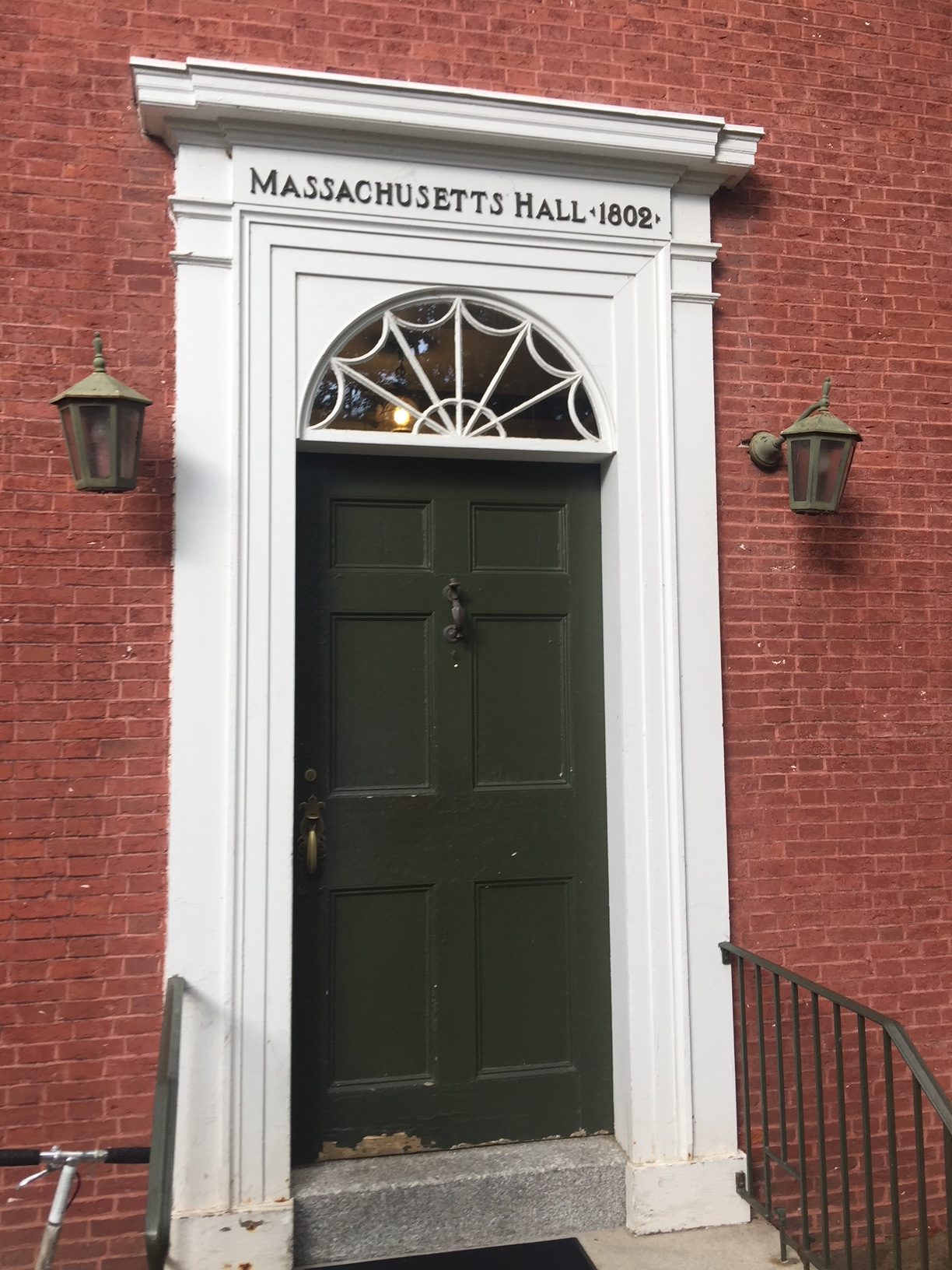
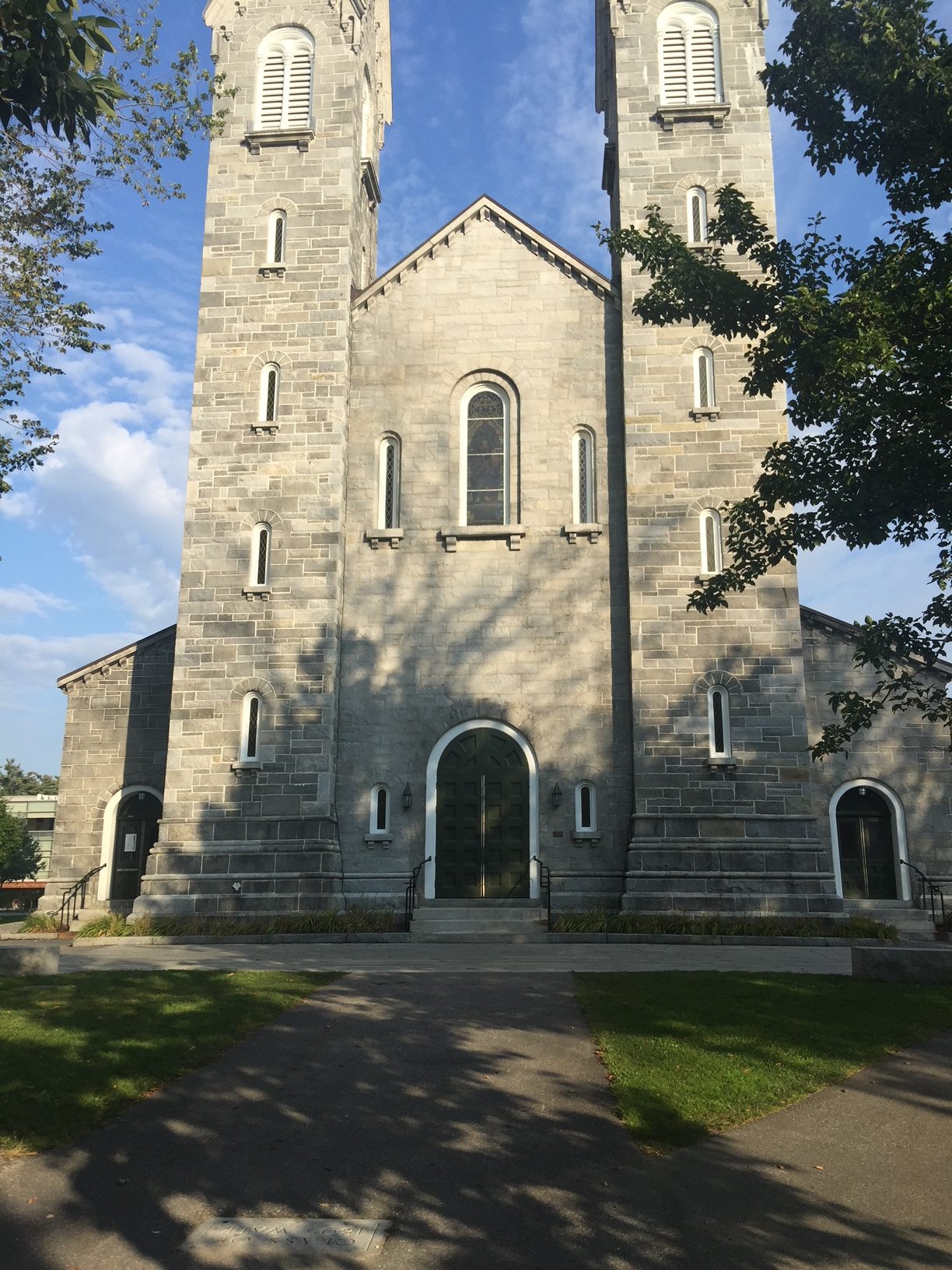
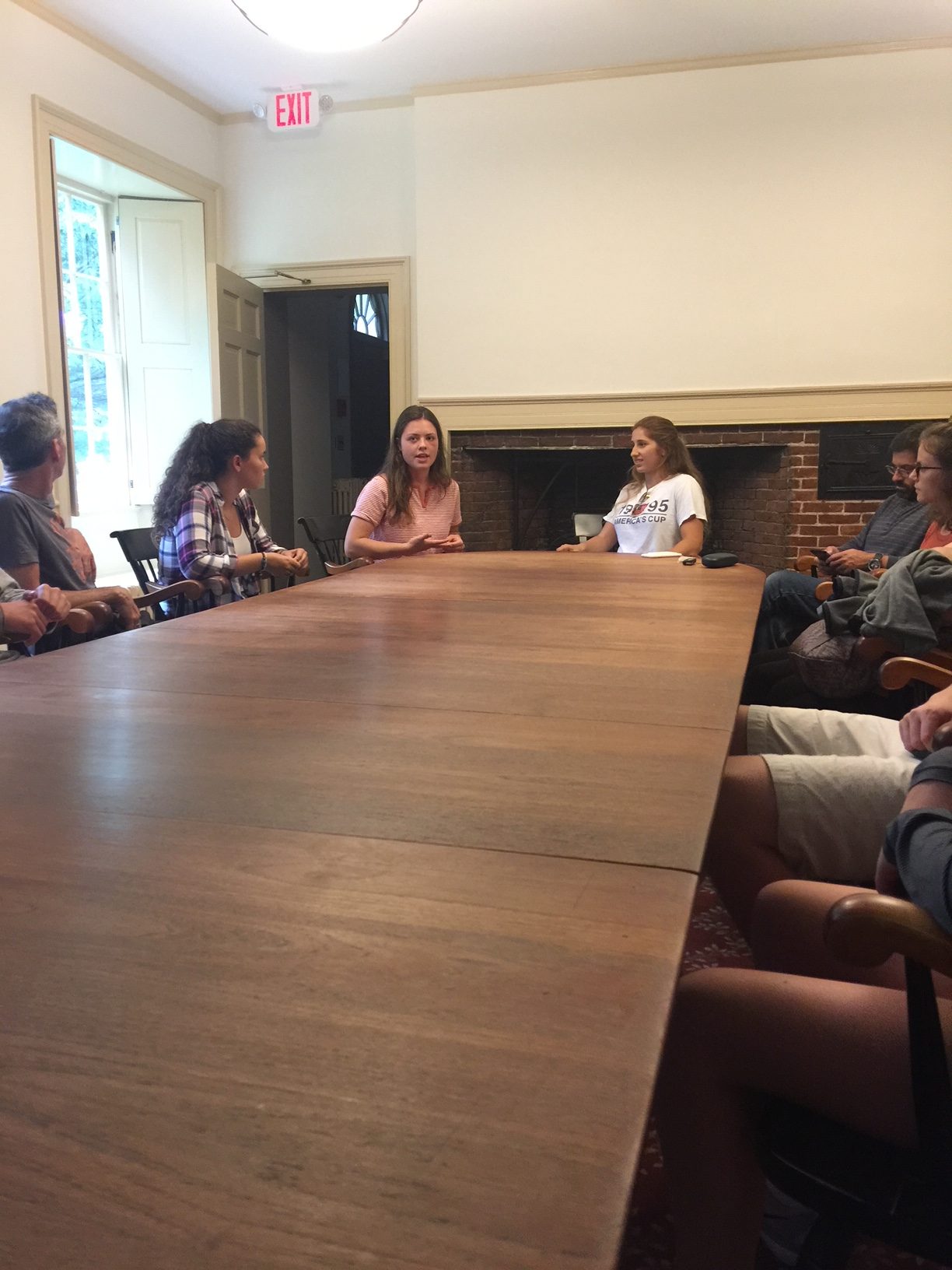
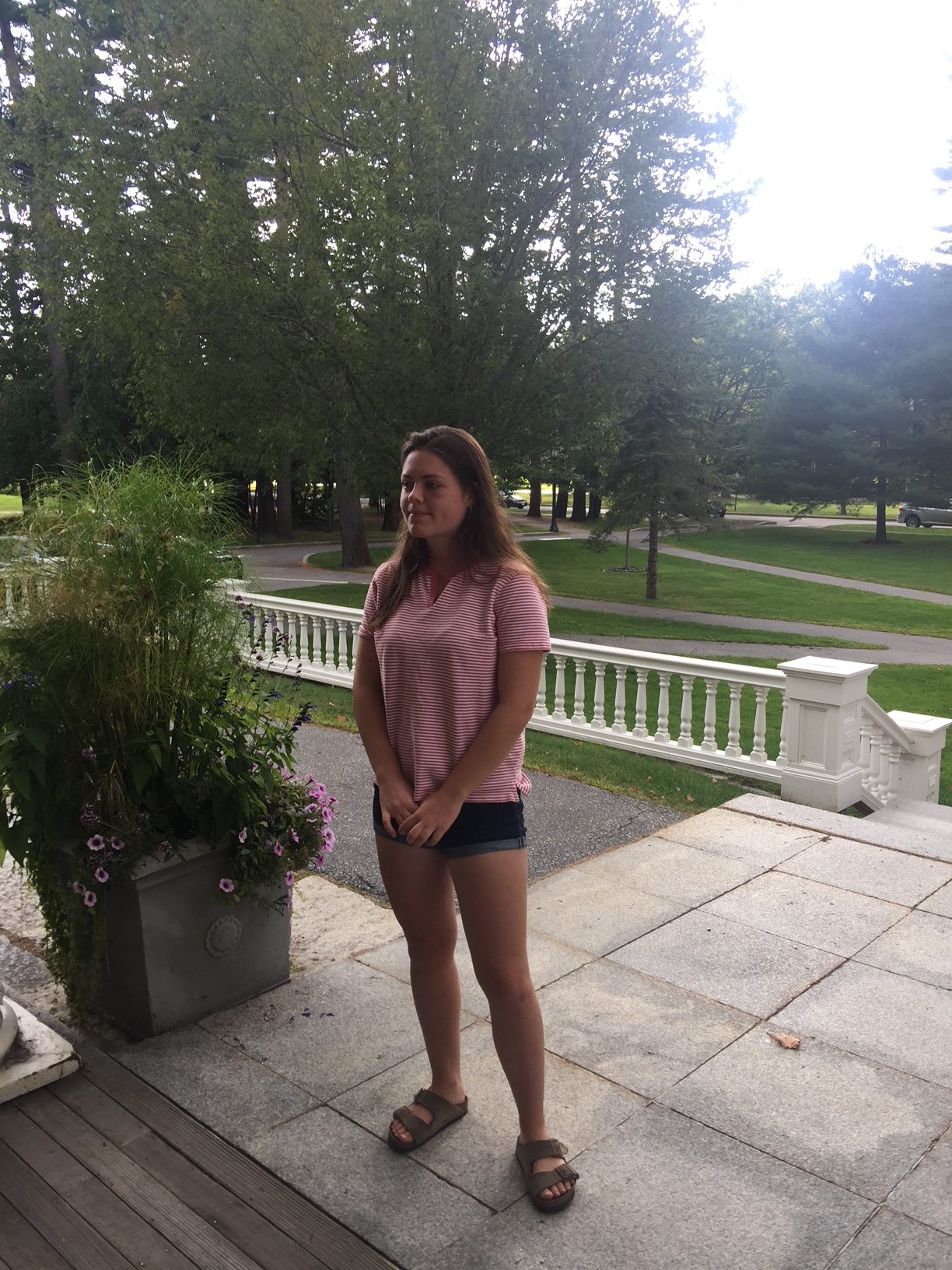
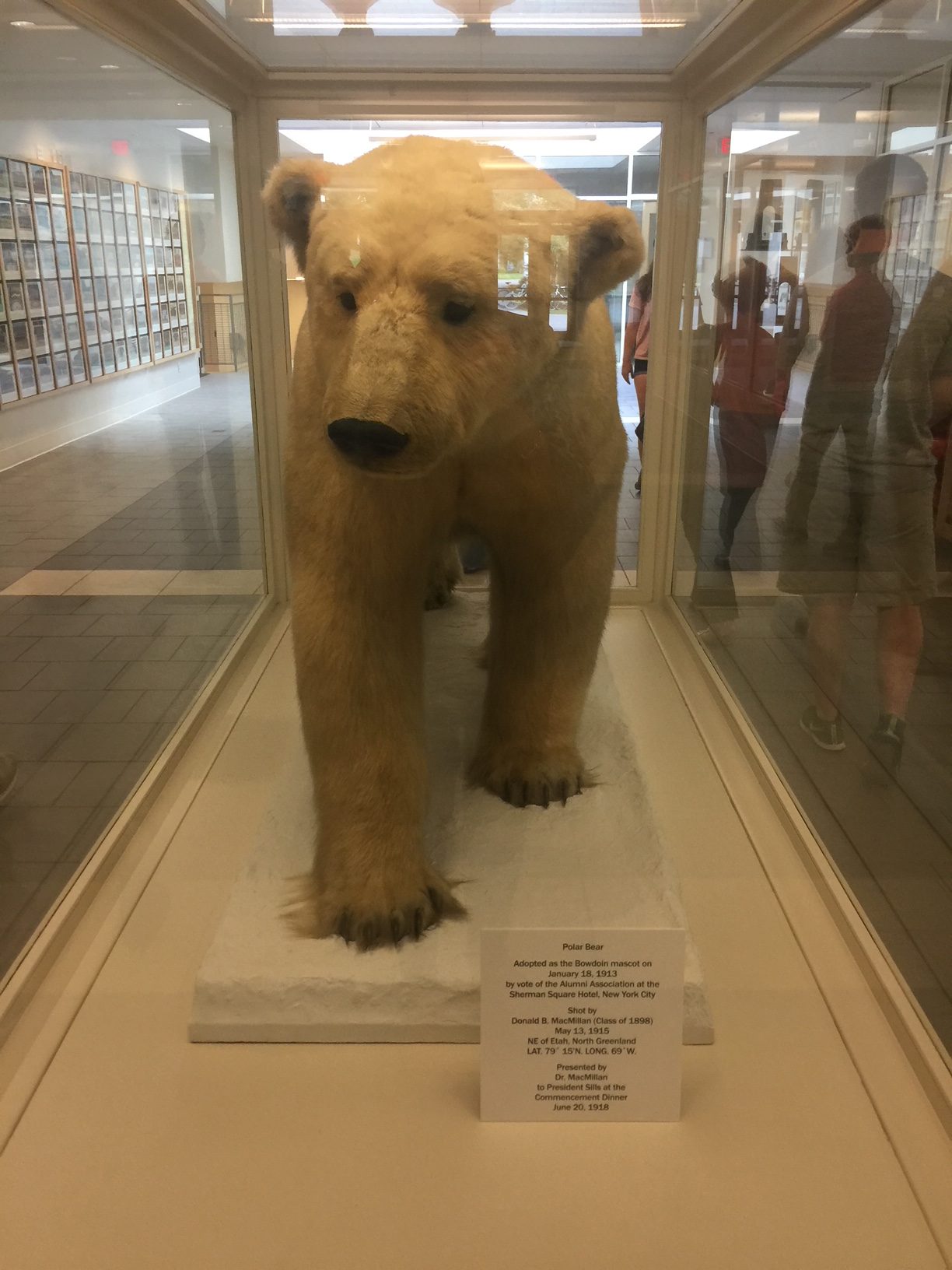
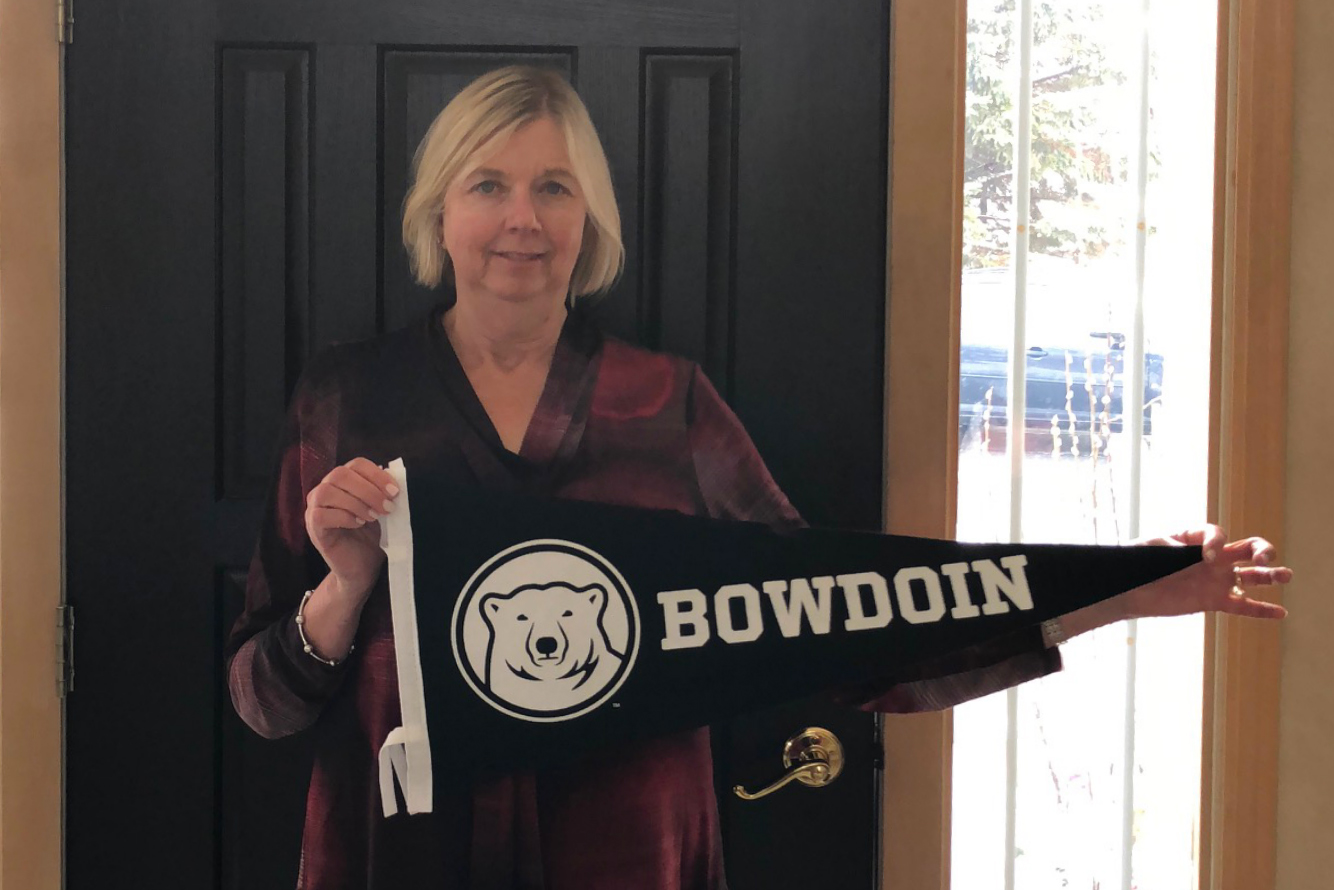
Attention rising seniors! It’s not too early to think about summer activities to get a jump on the college search. Here are the top 10 things to consider courtesy of the IECA. Click here for PDF.
Interested in studying International Relations, Political Science, Pre-Law, or Communications and be at the heart of our nation’s capital? Read this College Spotlight on American University located in Washington, D.C. to get a freshman’s perspective on life at the Capital.
Here is a step-by-step guide on how to pay for college courtesy of the Independent Educational Consultants Association (IECA). Click on this link https://link.iecaonline.com/financial-aid-flyer to download the PDF.
In September 2017, I had the pleasure of visiting Dartmouth College, the smallest and most intimate of the Ivys, located in Hanover, New Hampshire, and just a two-hour drive from Boston. Dartmouth was founded before the Revolutionary War in 1769 and offers idyllic New England charm, a great college-town atmosphere, academic rigor, and many outlets for social life. Like many of the northeastern schools I have visited, Dartmouth will also appeal to the winter and nature-loving spirit of Minnesota natives. The college owns two nearby mountains, a ski mountain and ski lodge, and the Appalachian Trail runs right through the town. Students at Dartmouth embrace the outdoors and all four seasons, and are offered many different opportunities to engage with both the liberal arts and the natural world. The College runs its own organic farm three miles from campus and operates an observatory for stargazing.
For those looking for the large lecture hall-style college experience, Dartmouth is not likely the school for you. But for those interested in developing close relationships with other students and professors, who learn best working through discussion in small groups, Dartmouth College is an excellent choice.
With just 4,200 students, Dartmouth specializes in small discussion classes with an average class size under twenty. All classes are taught by world-renowned professors who are the leaders in their fields, and seek to enable students to discover material on their own rather than “cover” the material in a more traditional, lecture-based setting. The small size allows Dartmouth to focus on providing a first-class undergraduate education that nurtures the development of well-rounded, articulate, and engaged citizens. Dartmouth is on a quarter system, which allows for very flexible scheduling and helps students select their courses within the year-round academic calendar.
Known as the “D-Plan,” Dartmouth allows students to customize their academic calendar by registering for four, ten-week terms out of the twelve terms offered throughout the year. The flexible academic calendar allows students to pursue outside work, service, and study abroad opportunities while completing their degrees in four years. Note, the D-Plan may be challenging for students who require more structure and depends on students establishing a four-year plan (and sticking to it) to ensure all requirements are met.
At Dartmouth, students are encouraged to explore a range of courses, with the understanding that the jobs of tomorrow have yet to be created. Dartmouth also offers a number of experiential learning programs that combine classroom instruction with off-campus travel and research, and highly encourages students to register for multiple study abroad experiences. Many end up studying abroad three to four times during their undergraduate careers to improve language skills and pursue more in-depth knowledge of a particular topic. Dartmouth’s Institute for Arctic Studies offers interdisciplinary courses for students to take part in polar research or even participate in the student exchange program with the University of Greenland. Students are allowed to take some classes at Tuck Business School.
Dartmouth admissions staff is looking for students who are:
Approachable, Collaborative, Independent, Passionate, Curious, Engaged, and Adventurous. They also prize students that desire lifelong learning, and view Dartmouth as only the first step in this direction.
Dartmouth is committed to ensuring students receive the financial aid they need, and even offers free tuition to families making under $100,000 a year. In order to fulfill their goal of keeping student loans down, Dartmouth offers only need-based scholarships. Families should spend a half hour working with the net price calculator to get an idea for their likely family contribution. After applying, students will be contacted for an interview with local Dartmouth alumni, and are highly encouraged to take advantage of this opportunity.
Though a small school, Dartmouth features a very active Greek Life and levels of school spirit that rival the larger Ivys and state schools. Like Hogwarts, Dartmouth is also on the House system. Students move into houses as freshmen and remain with the same group through their undergraduate career. Despite its small size, Dartmouth offers activities for students with many different interests including a main stage theater production every term, 35 varsity teams, and even burling (log ruling). As freshmen, hundreds of Dartmouth students participate in the “first-year trips” program across New Hampshire and Vermont, choosing from both service trips or recreation-based trips exploring the nearby White Mountains.
Many students describe the campus and local community as a bit of an isolated bubble, but love it for this quality. Students who are smart, academically motivated, and seek the company of a community of scholars would thrive at Dartmouth. Students who are social and enjoy the outdoors through the changing seasons will also be happy here.
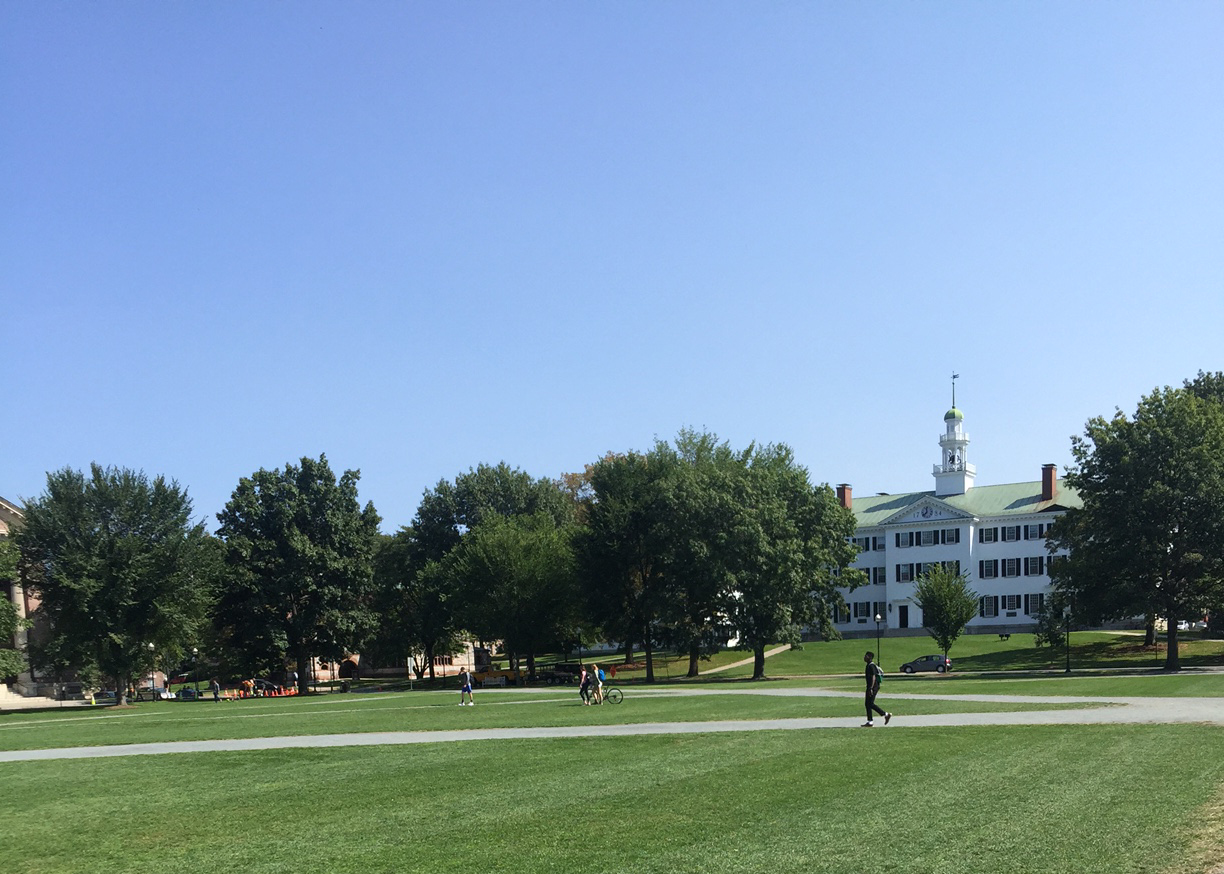
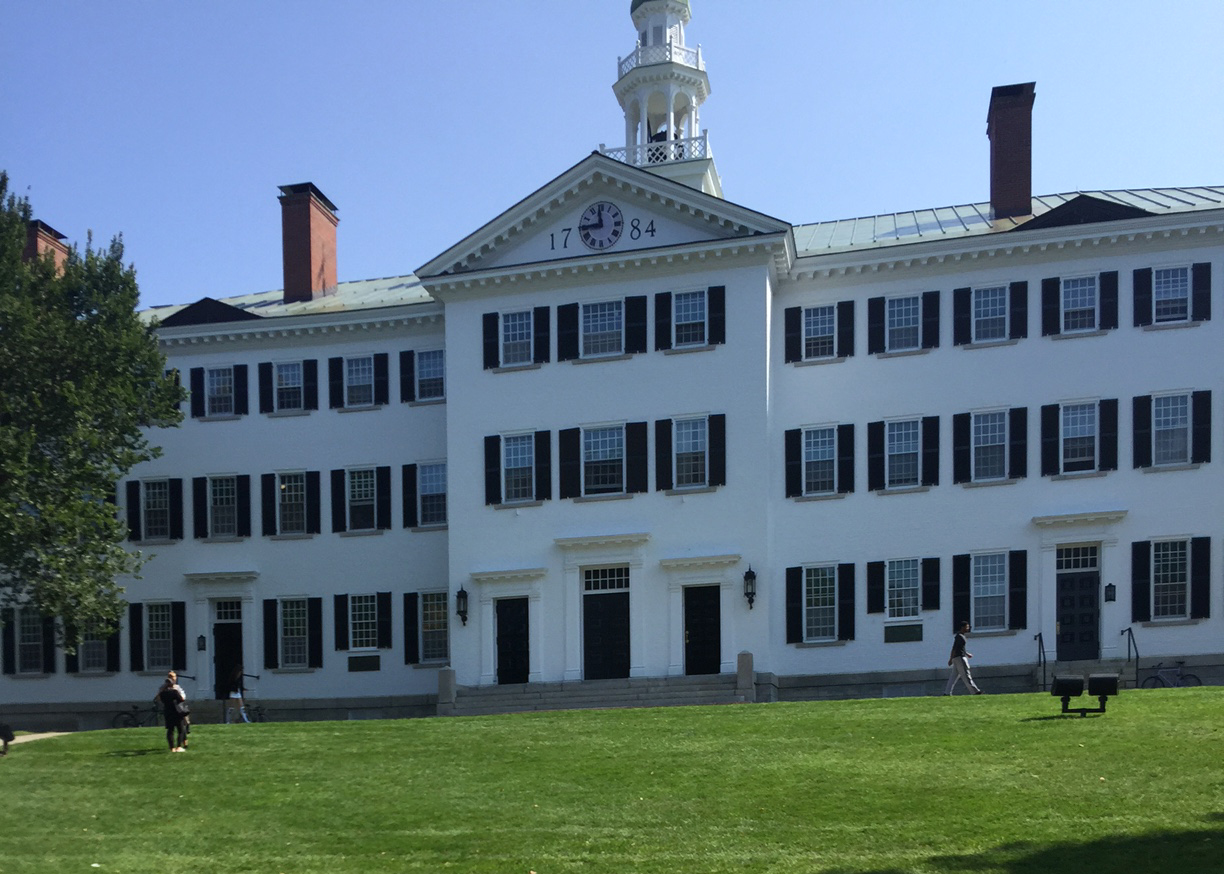
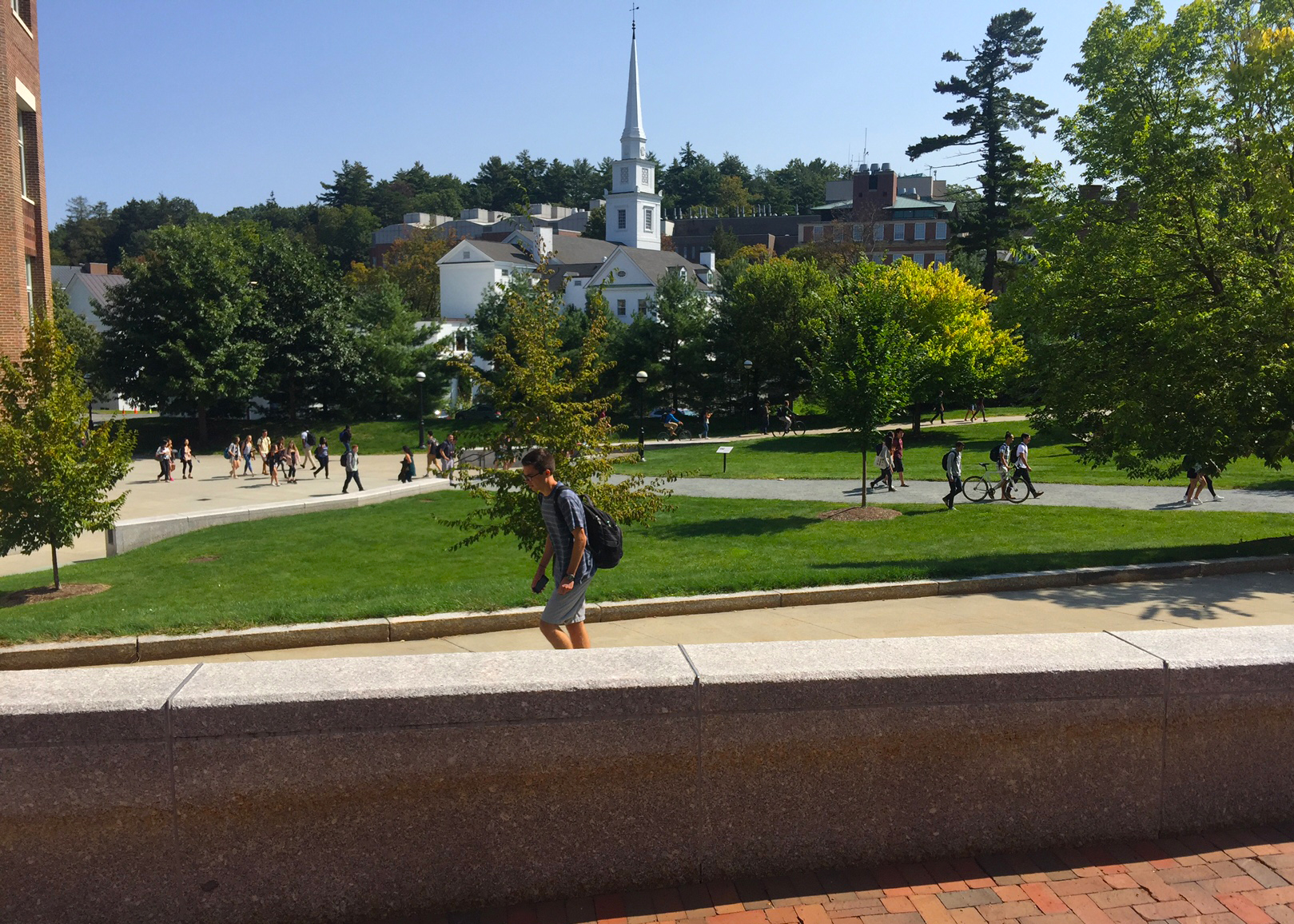
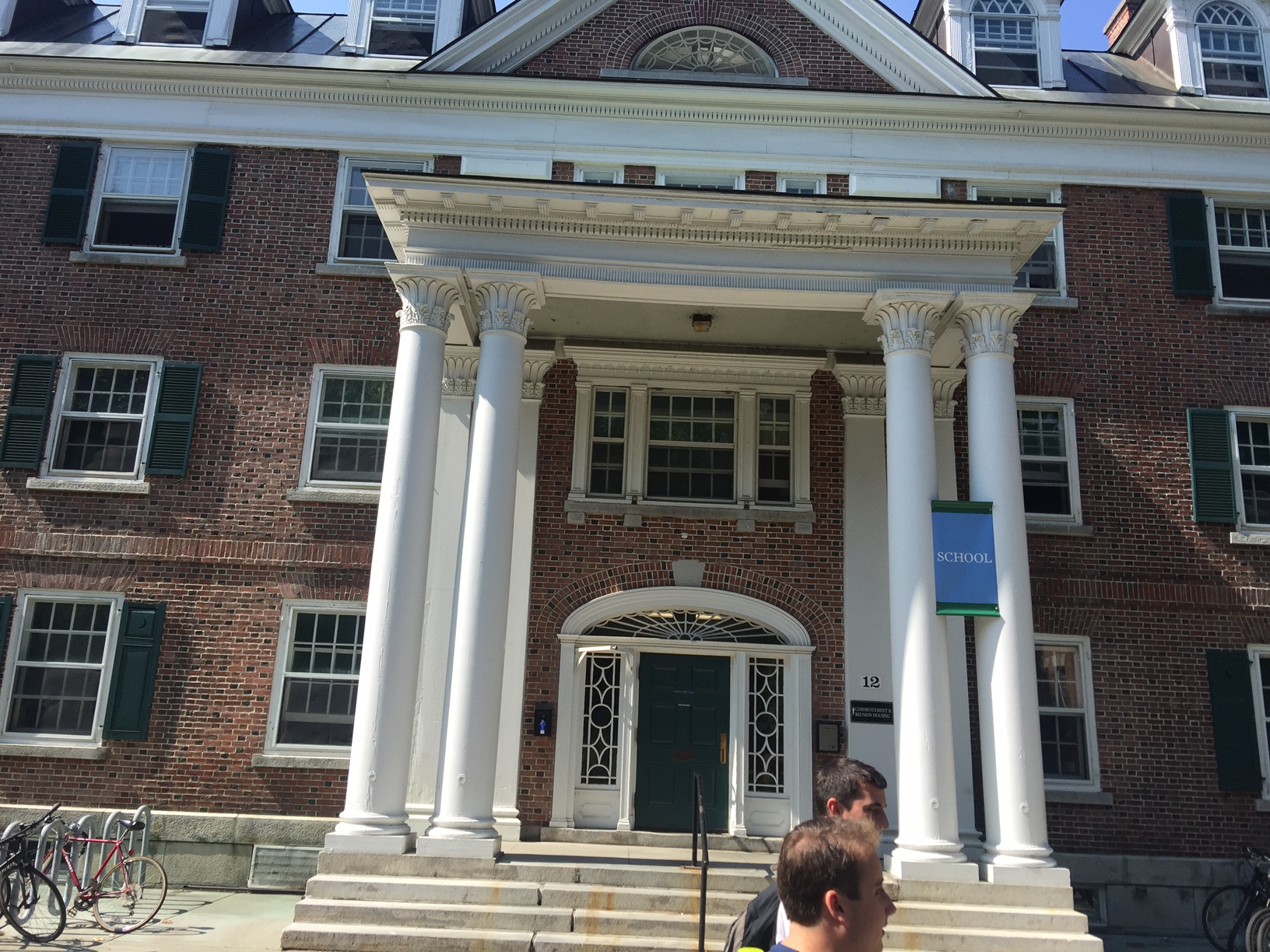
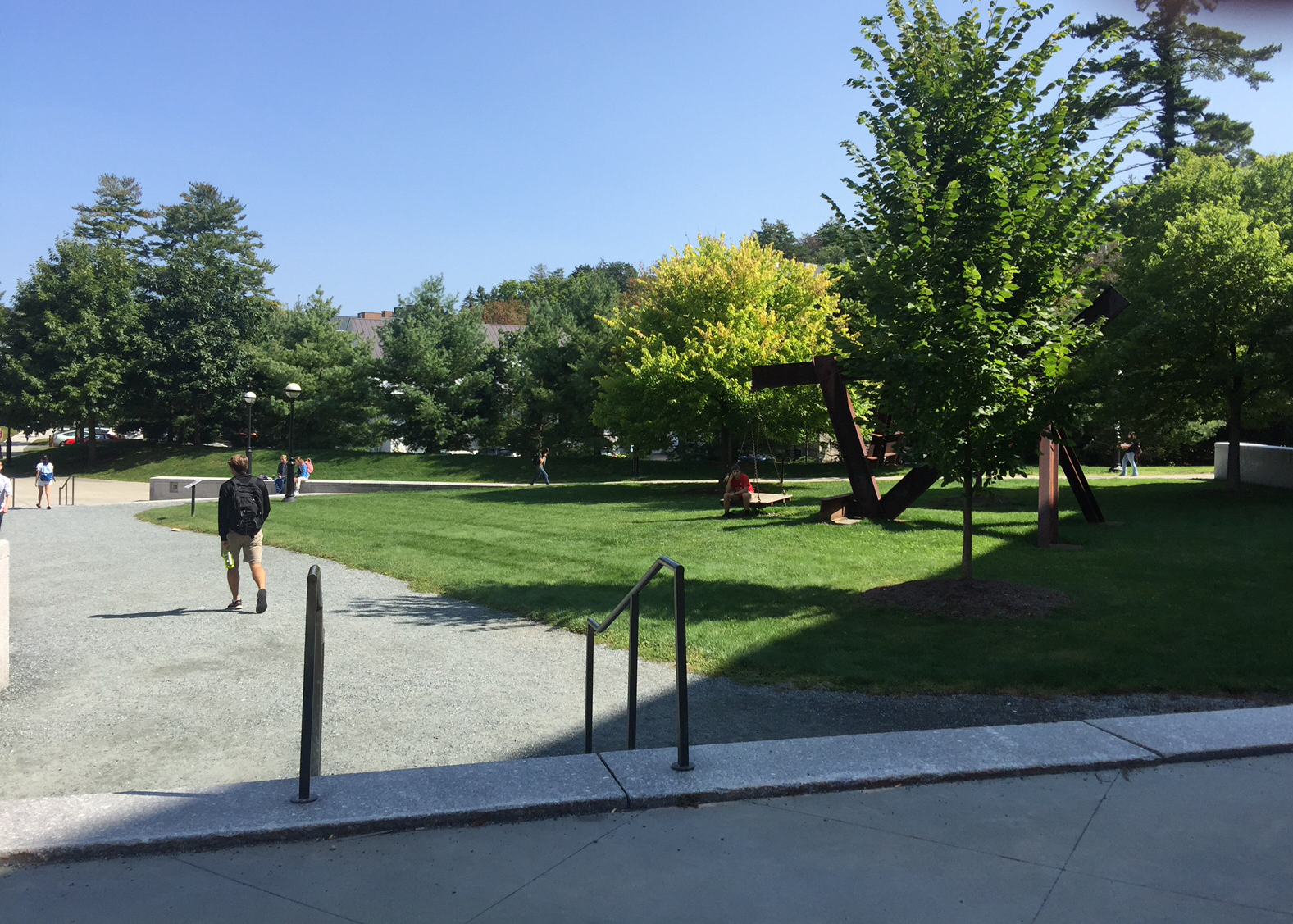

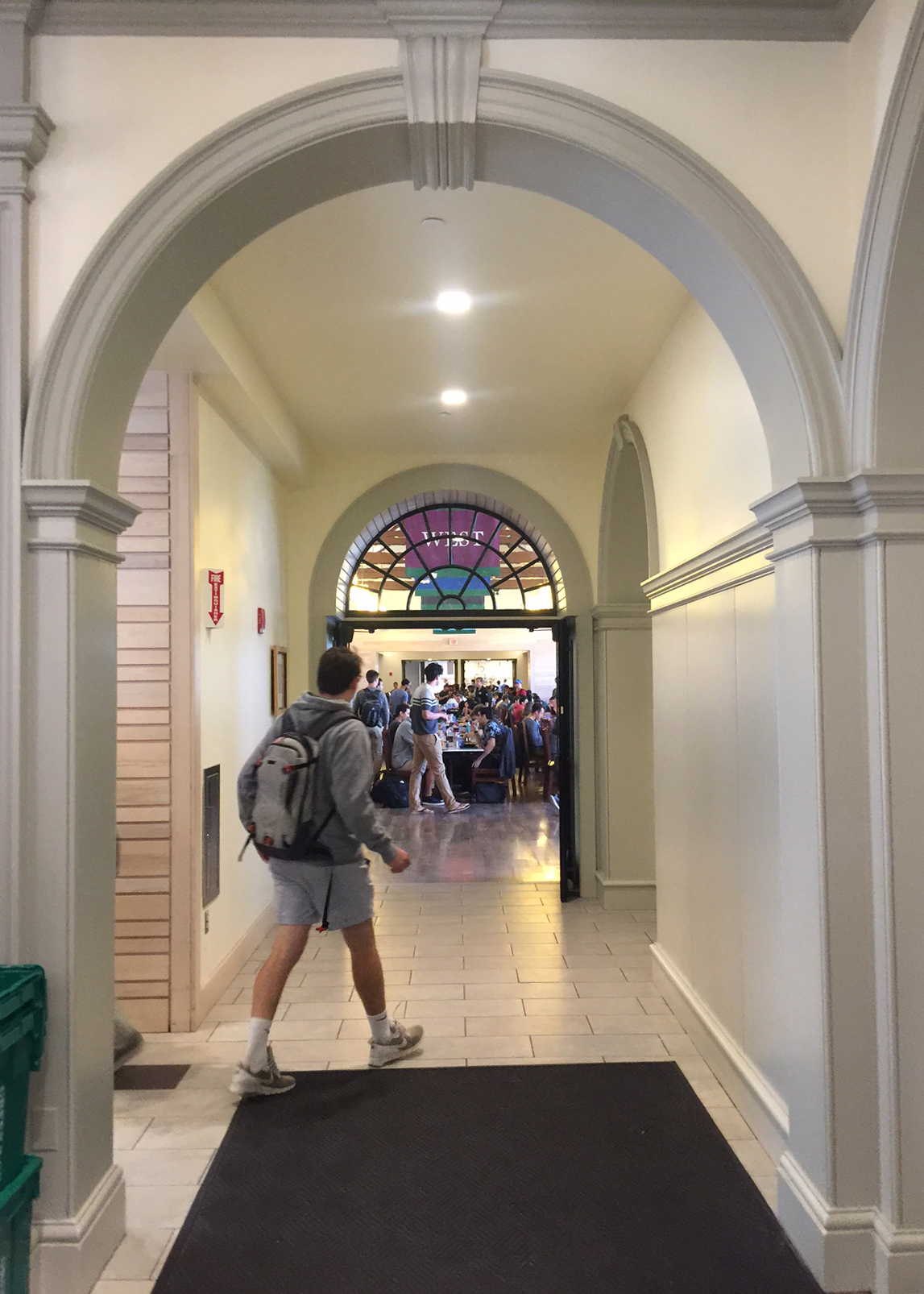
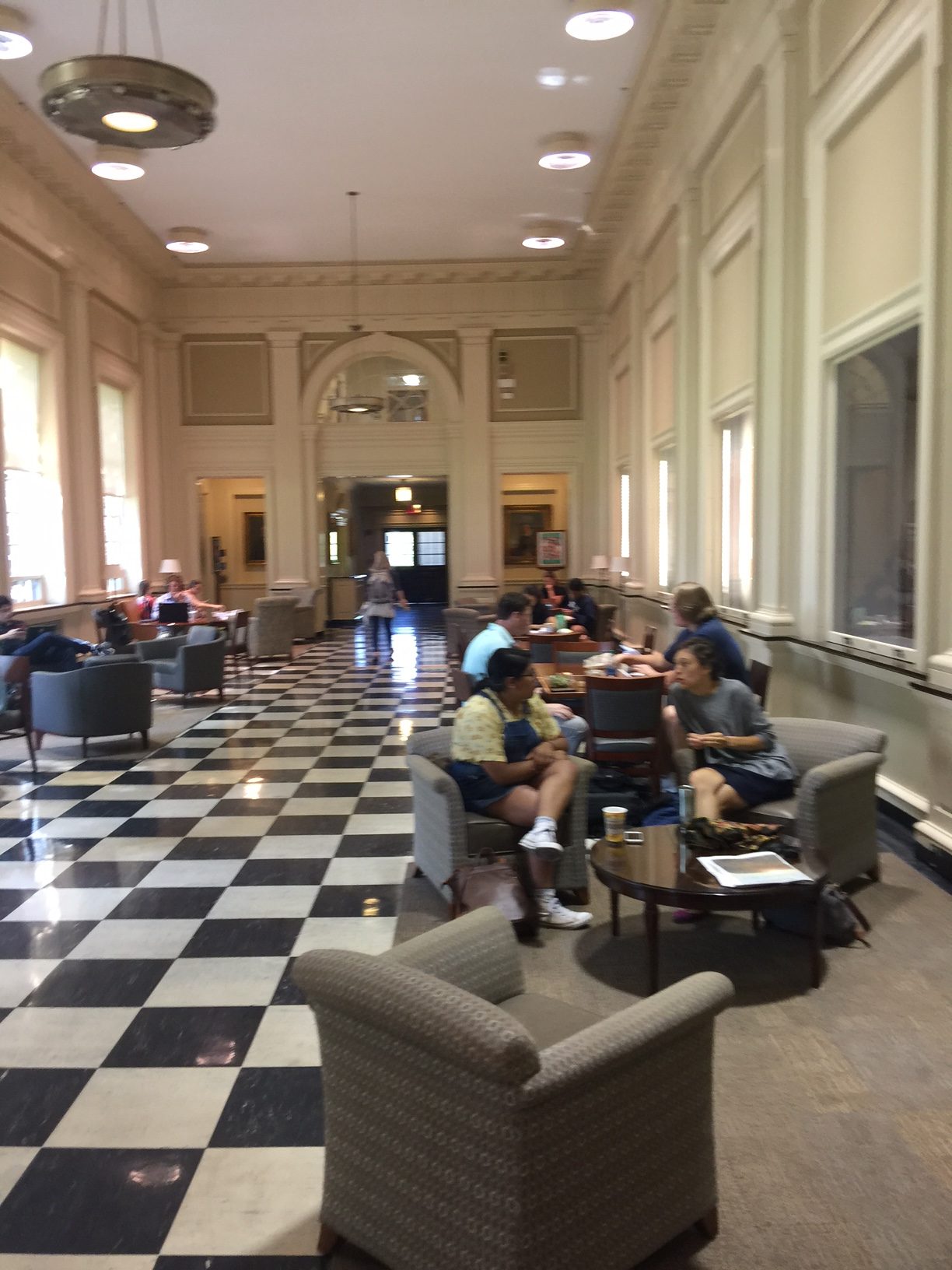


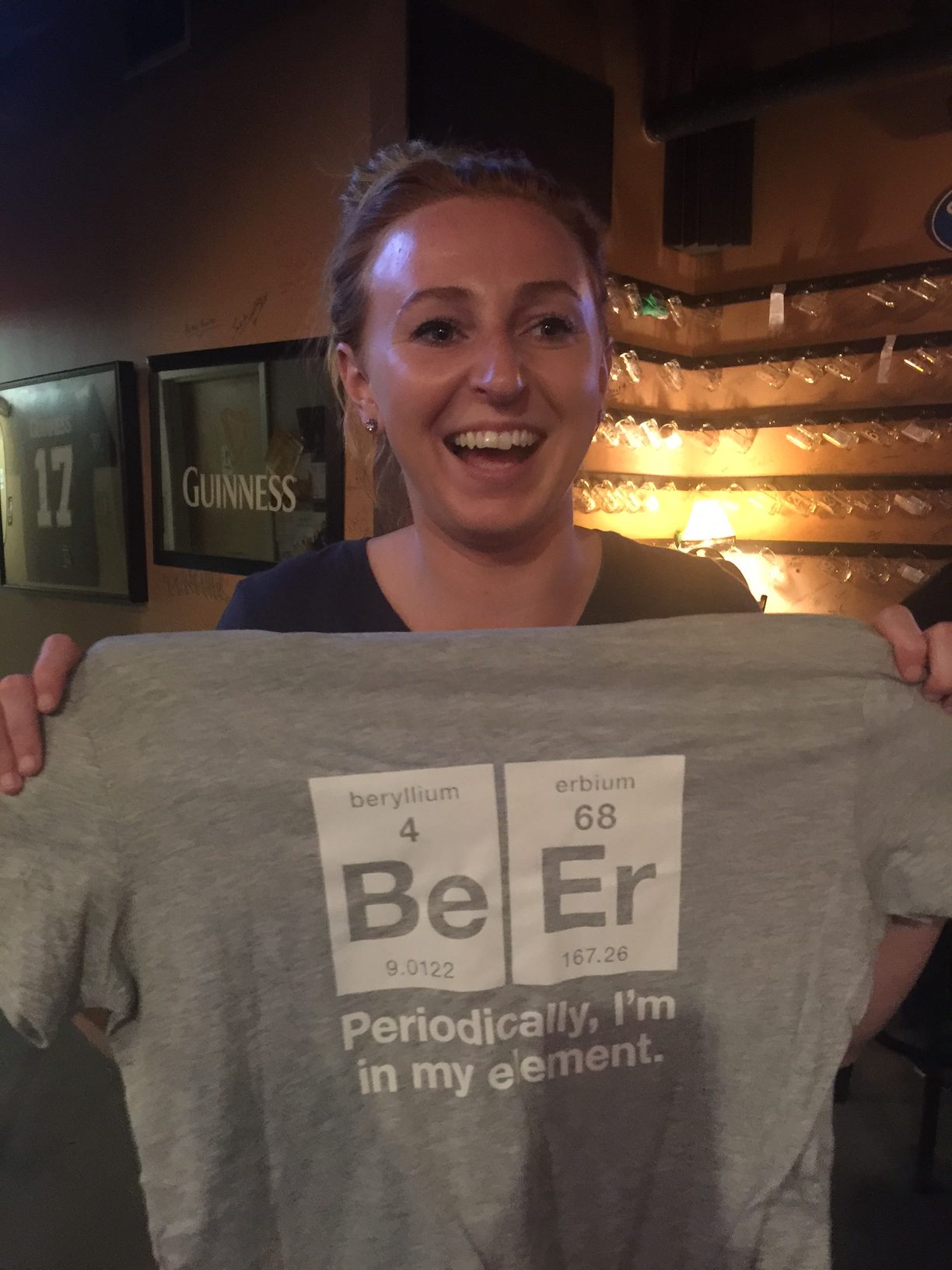
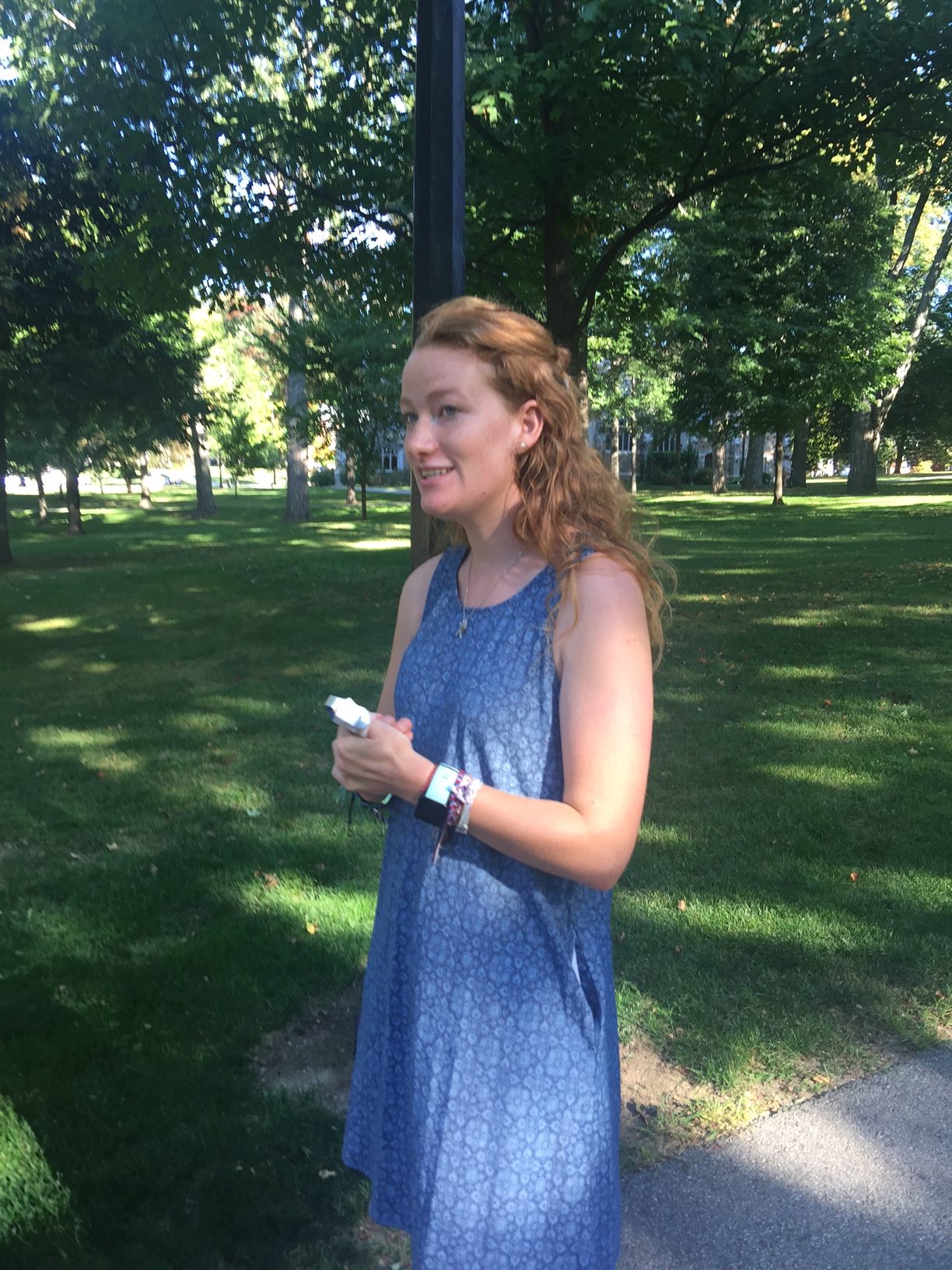

Wondering what colleges think about high school students using independent college counselors like us at College Expert? Here’s a blog by Tulane University’s Director of Admissions about this very topic. So You Are Using an Independent Counselor

This is an excellent article about how “parents can help their kids navigate the pressures of their digital lives — without pulling the plug on the positives.”
Social Media and Teen Anxiety
